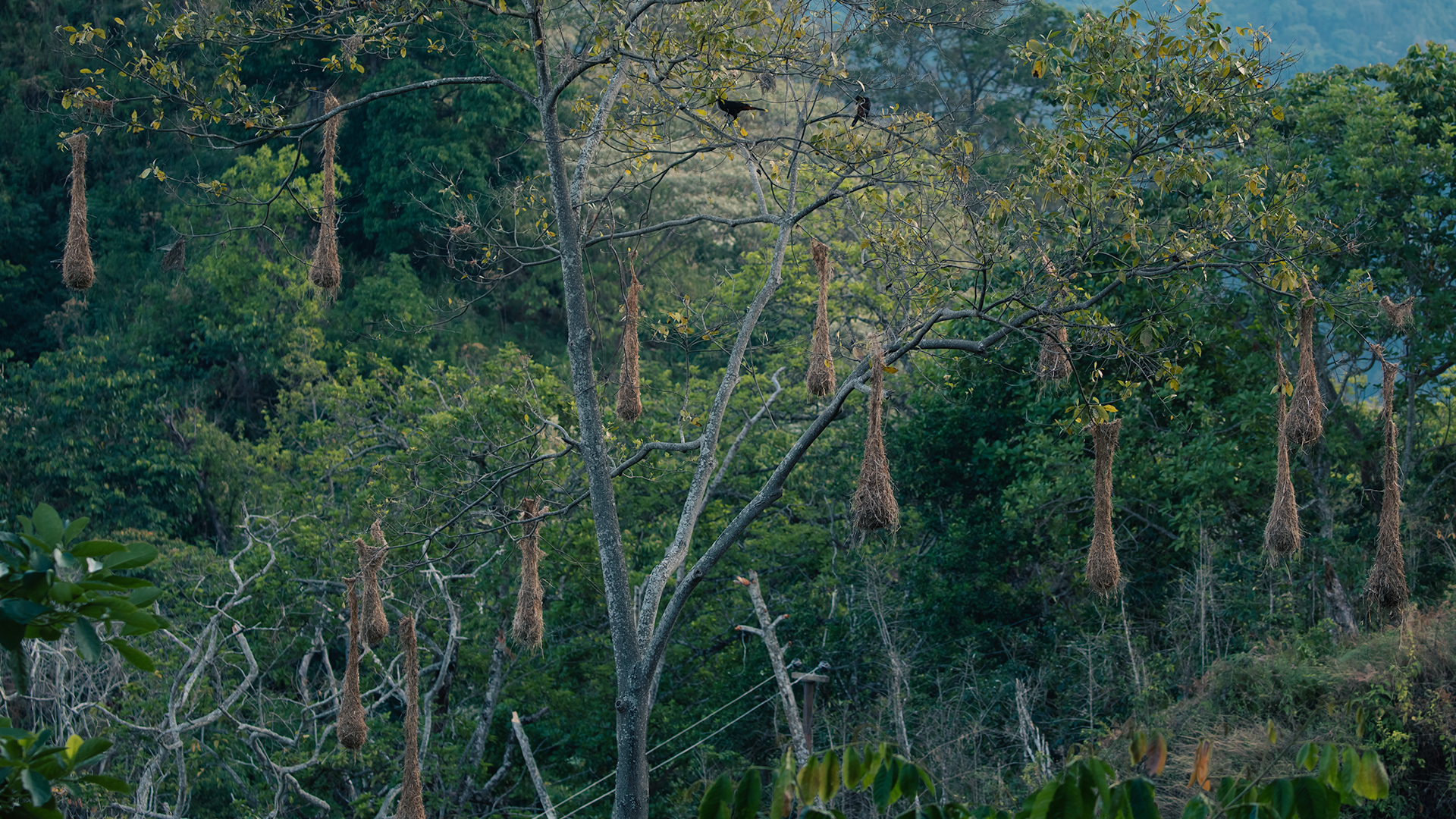
Minca is a peaceful little village in the foothills of the Sierra Nevada de Santa Marta mountains. 650 meters above sea level, Minca is a converging point for many endemic birds from the Sierra Nevada de Santa Marta. We drove there on our way to Santa Marta and after a rather disappointing day for birds were pleasantly surprised by the variety of birds we saw here.
On the way from Medellin, we met with some Colombian cyclists and what they can do on a normal day of riding is a bucket list climb for me! We photographed most of these birds in a feeder and coffee plantation called La Victoria.
The coffee plantation is one of the rare ones that actually had some really good coffee and we ended up buys several kilos of their best single origin. And even though we have done so many coffee tours, I learnt a new coffee term - "Pergamino", which is the Spanish word for parchment which is also what the thin paper like cover on a coffee bean looks like.
Click on the images to learn more about these fascinating birds of Minca. Click again to close and come
back to the gallery.
Bird names are linked to their respective profile page on e-Bird which is a fantastic resource from Cornell University for bird enthusiasts.
Click on the buttons below to filter.
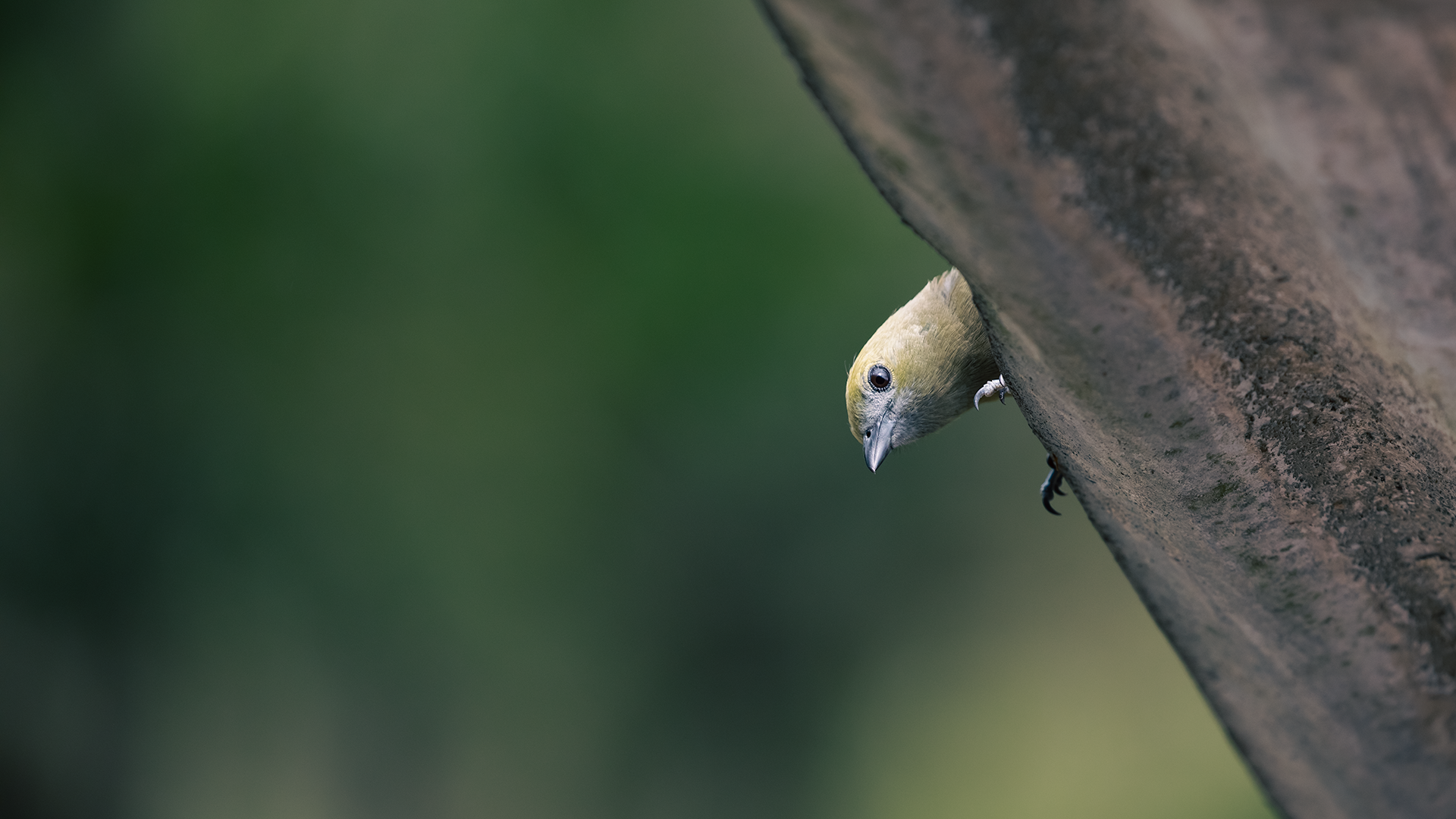
Large, plain tanager, gray overall with hints of olive-green in good light; note contrasting black wings with paler patch at base of primaries. A habitat generalist often found around palm trees and in open shrubby areas, gardens, and forest edges. Usually in pairs or small flocks, sometimes with other species. Often quite noisy and conspicuous; gives a series of sputtering squeaks or a single nasal “swee?”
COLOMBIA . Minca . 2022
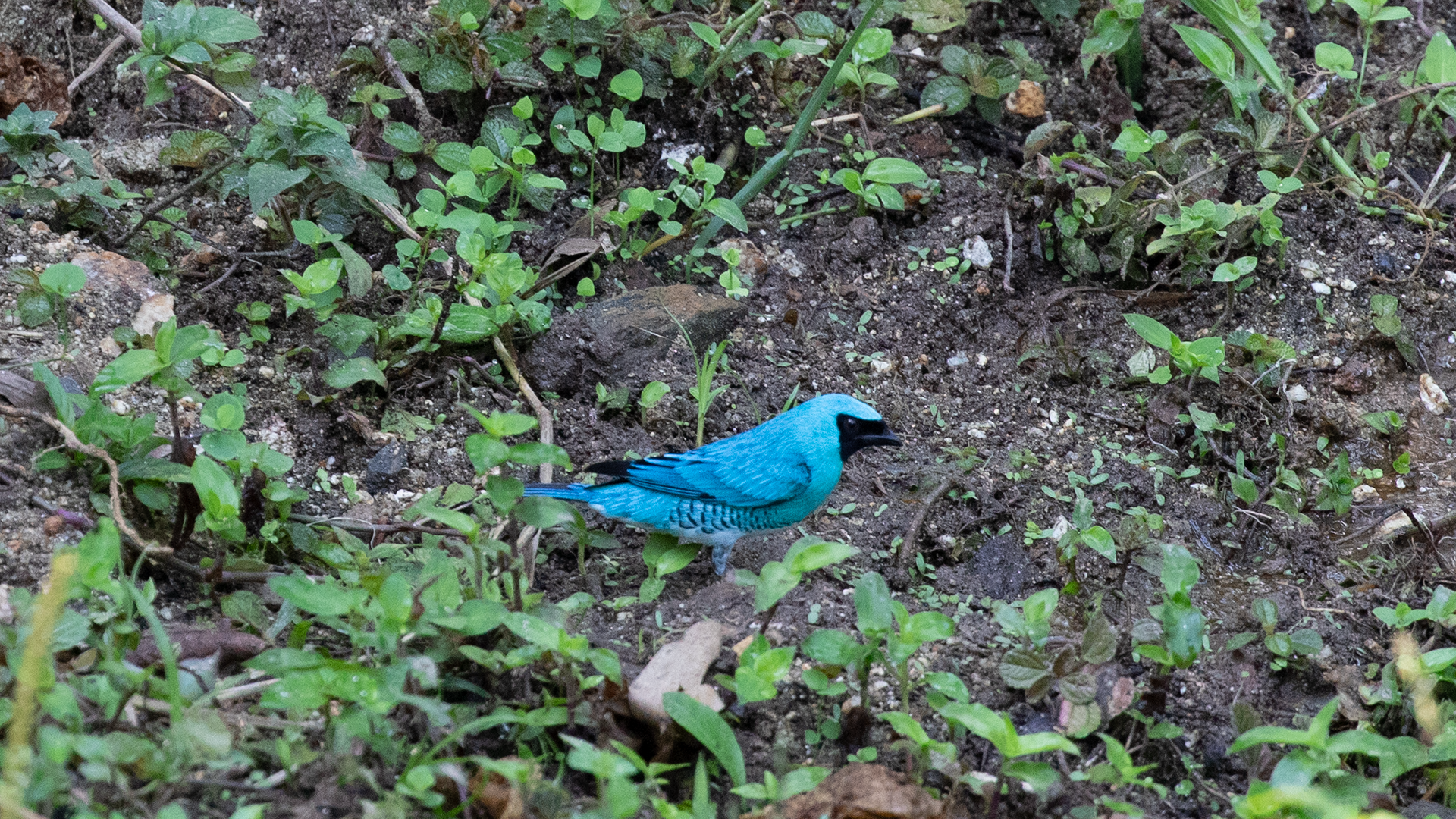
Unique small tanager, widespread in lowlands and foothills up to 1,800 m. Male is bright cerulean with a black mask, white lower belly, and some black bars on the sides. Female is mossy green with paler yellow belly and scalloped barring on the sides. Behavior much different from other tanagers: perches upright, often on exposed branches or treetops, and sallies out for insects like a flycatcher. Usually seen in pairs or small loose groups. Found at forest edges, clearings, or gardens.
COLOMBIA . Minca . 2022

Large woodpecker found in the subtropical and temperate zones in the Andes from extreme western Venezuela to Peru. Look for the white stripe that runs down the face and neck, a white ‘V’ on the back, and the cinnamon belly with dark barring. The male has a red crest. Found at higher elevations than any similar large woodpeckers – typically above 1,800m and all the way up to over 3,000m. Pairs wander widely throughout the forest, so they are infrequently encountered.
COLOMBIA . Minca . 2022

Large tanager with a hefty bill. Adult males are completely red; immature males are dull yellow-olive with blotchy patches of red. Females are variable in color, ranging from pale dull yellow to brighter orange. Can be confused with female Scarlet Tanager; Summer has a longer, paler bill and less contrast between wing and body color. Also compare with dustier-looking, stouter-billed Hepatic Tanager. Breeds in mature forests, favoring mixed deciduous and pine in the southeastern U.S. and riparian corridors in the western U.S. and northern Mexico. Extensive winter range from Mexico to Bolivia, where it can be found in any wooded area. Often gives a short, descending rattle “pit-a-tuck.”
COLOMBIA . Minca . 2022
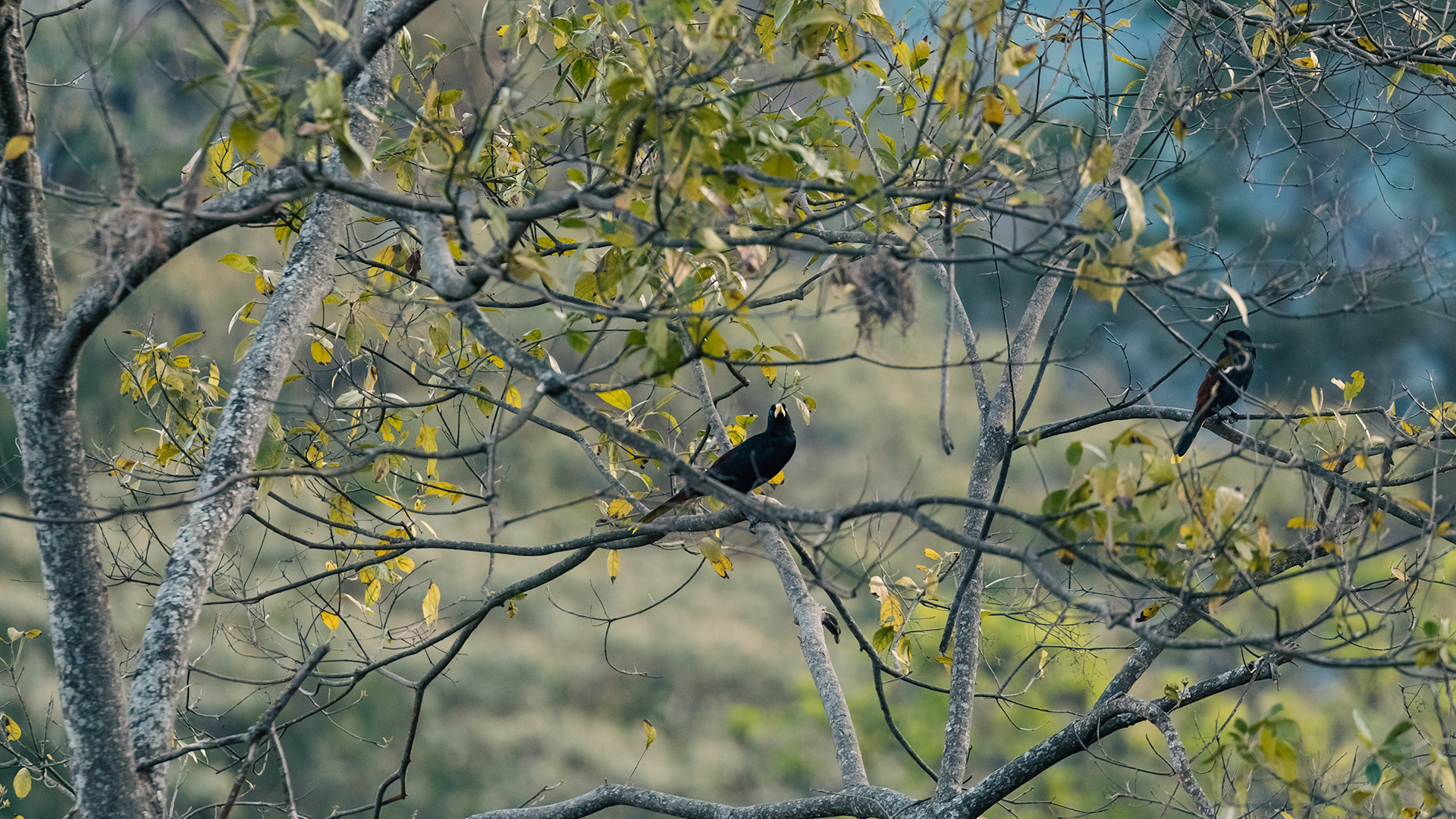
Large blackbird with thick triangular bill. Dark blackish plumage, fading to paler reddish-brown at rear. At a distance, appears all black. Striking yellow tail and pale blue eye. Separated from other oropendolas by combination of large size and dark color. Often found in loose flocks anywhere with some trees, including forests, edges, and even disturbed open habitats. Oropendolas are colonial nesters that build hanging woven nests. Listen for bizarre gurgling noises.
COLOMBIA . Minca . 2022
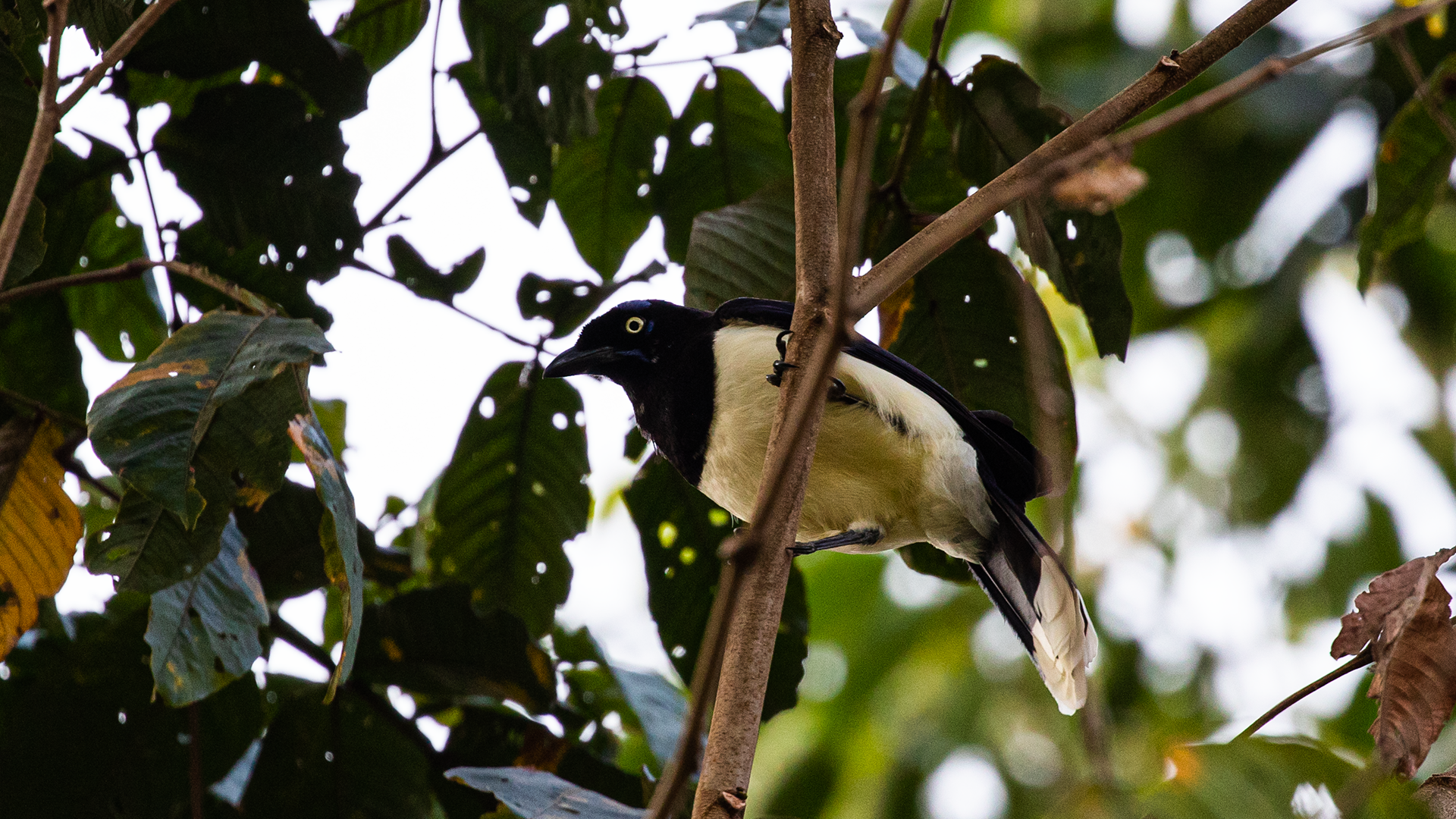
Striking jay with mostly black head and throat, deep indigo upperparts, and contrasting white belly. Long tail with white tip. Pale eye. Sexes alike. Usually found in small family groups. Occurs in forested habitats, including shrubby second growth and forest edge. Calls include a harsh doubled “chee-chee” and other mechanical and musical notes.
COLOMBIA . Minca . 2022
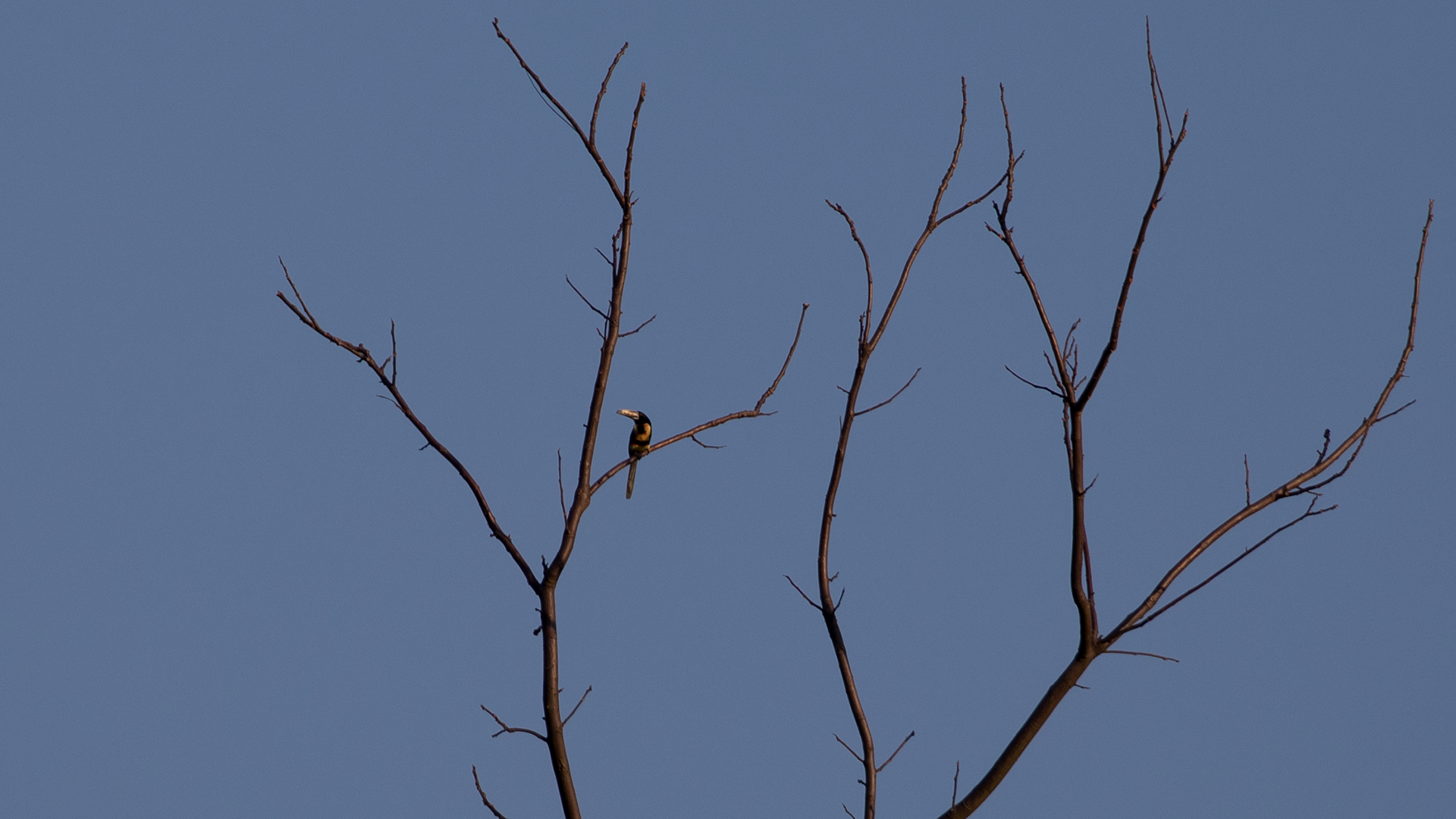
An attractive small toucan of tropical lowland forest and edge. Usually found in small groups moving through the canopy of fruiting trees or seen flying, one at a time, across clearings and between trees. Flight rather direct and fast, when long-tailed and long-billed shape is distinctive. Note the yellow body with red and black markings, and the serrated pattern on the big bill.
COLOMBIA . Minca . 2022

Medium-sized hummingbird, male mostly green with turquoise tones. Female green above and gray below. On both sexes, note contrasting white undertail coverts to distinguish from other hummingbirds. Most similar to Bronze-tailed Plumeleteer, but tail dark blue-black, not bronzy. Usually seen singly at flowers in forest, edges, or shrubby second growth. Rarely visits feeders.
COLOMBIA . Minca . 2022
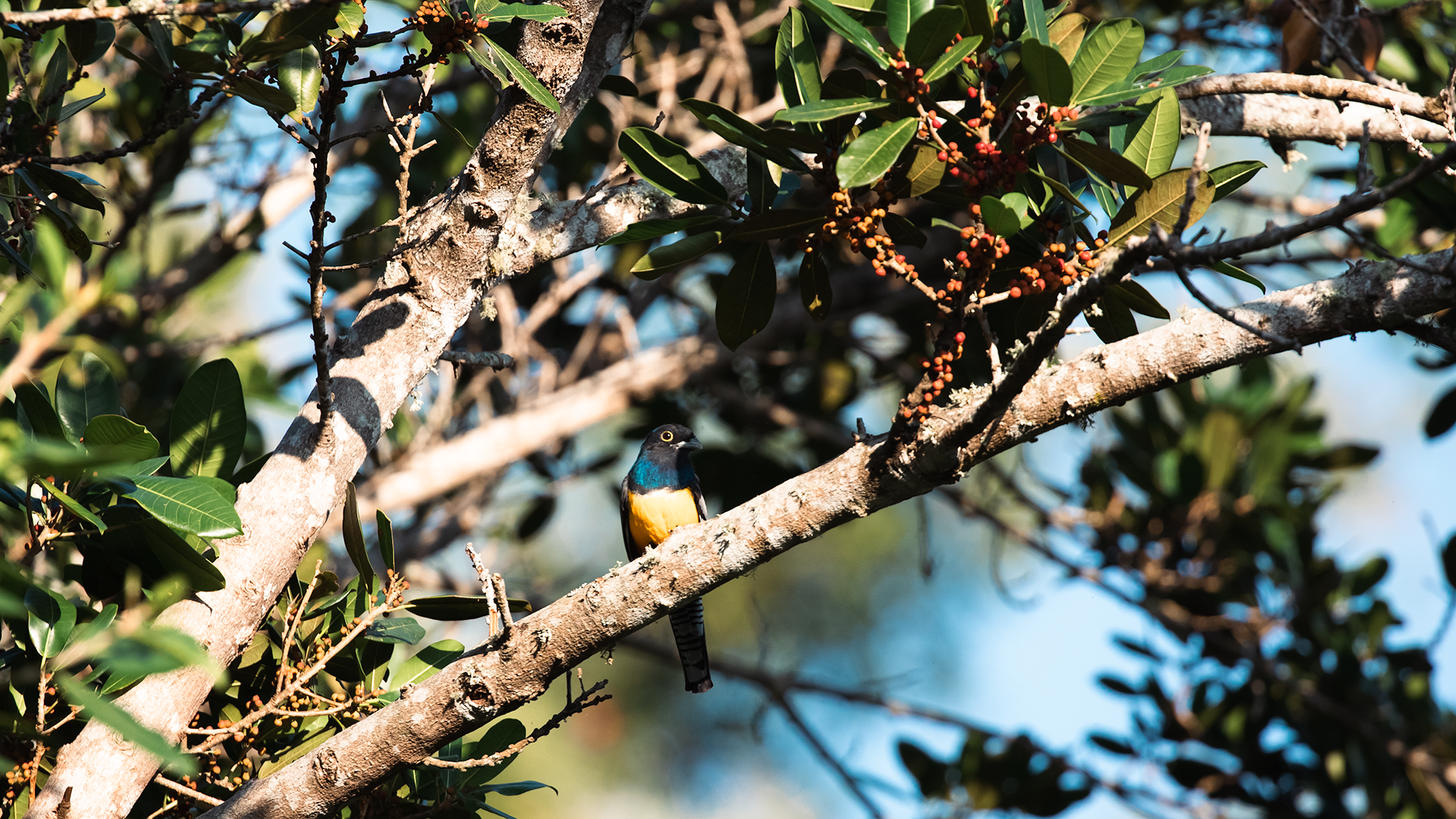
Relatively small and compact yellow-bellied trogon of tropical lowland forest, mainly in humid areas. Perches at mid to upper levels, often high in canopy. Male has yellow eyering, female has broken white eyering; both sexes have narrow black-and-white barring on underside of tail. Female Gartered has white barring on its closed wings which female Black-headed Trogon lacks. Digs its nest in large arboreal wasp nests. Used to be known as Violaceous Trogon.
COLOMBIA . Minca . 2022
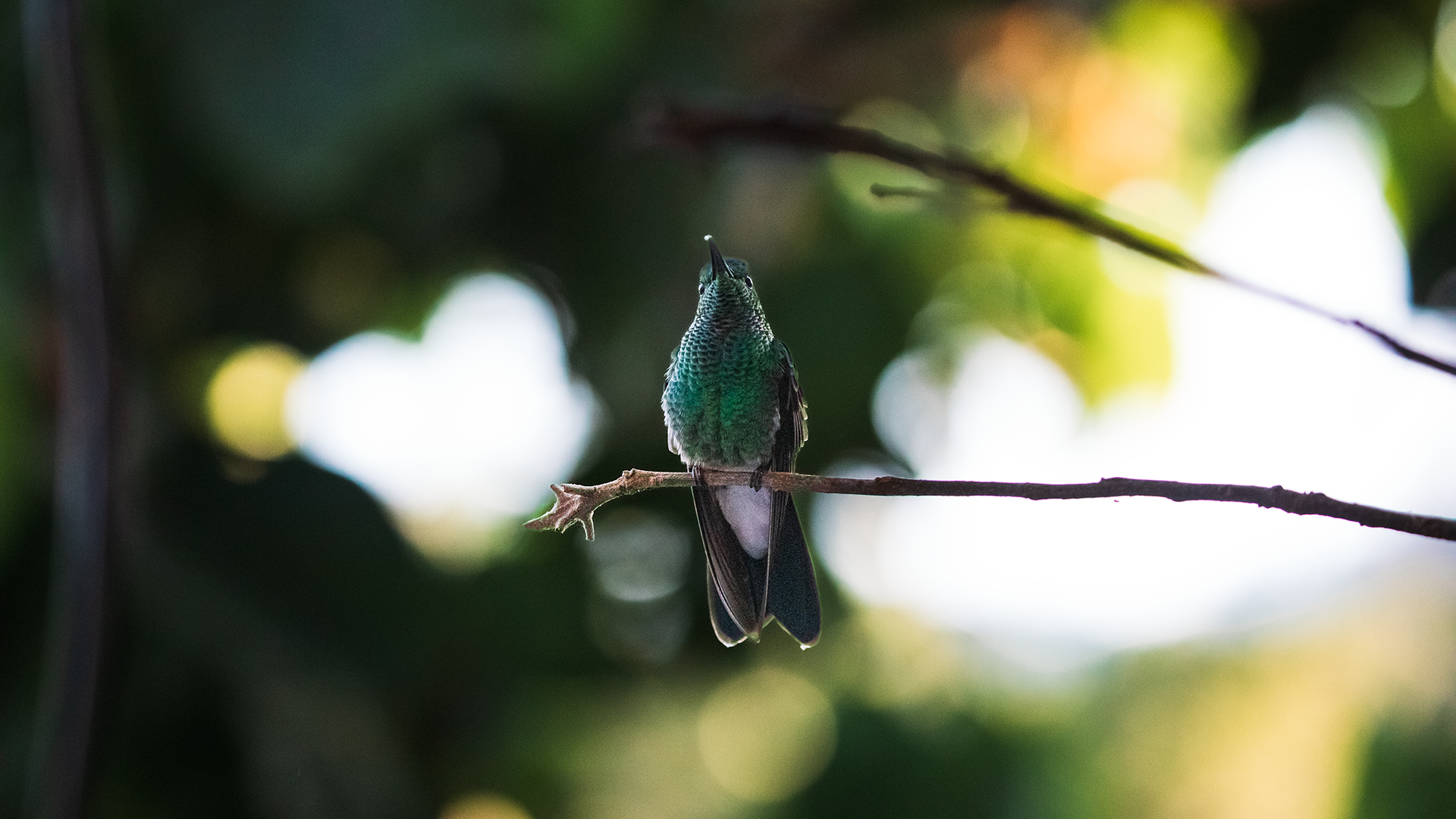
Medium-sized hummingbird, male mostly green with turquoise tones. Female green above and gray below. On both sexes, note contrasting white undertail coverts to distinguish from other hummingbirds. Most similar to Bronze-tailed Plumeleteer, but tail dark blue-black, not bronzy. Usually seen singly at flowers in forest, edges, or shrubby second growth. Rarely visits feeders.
COLOMBIA . Minca . 2022
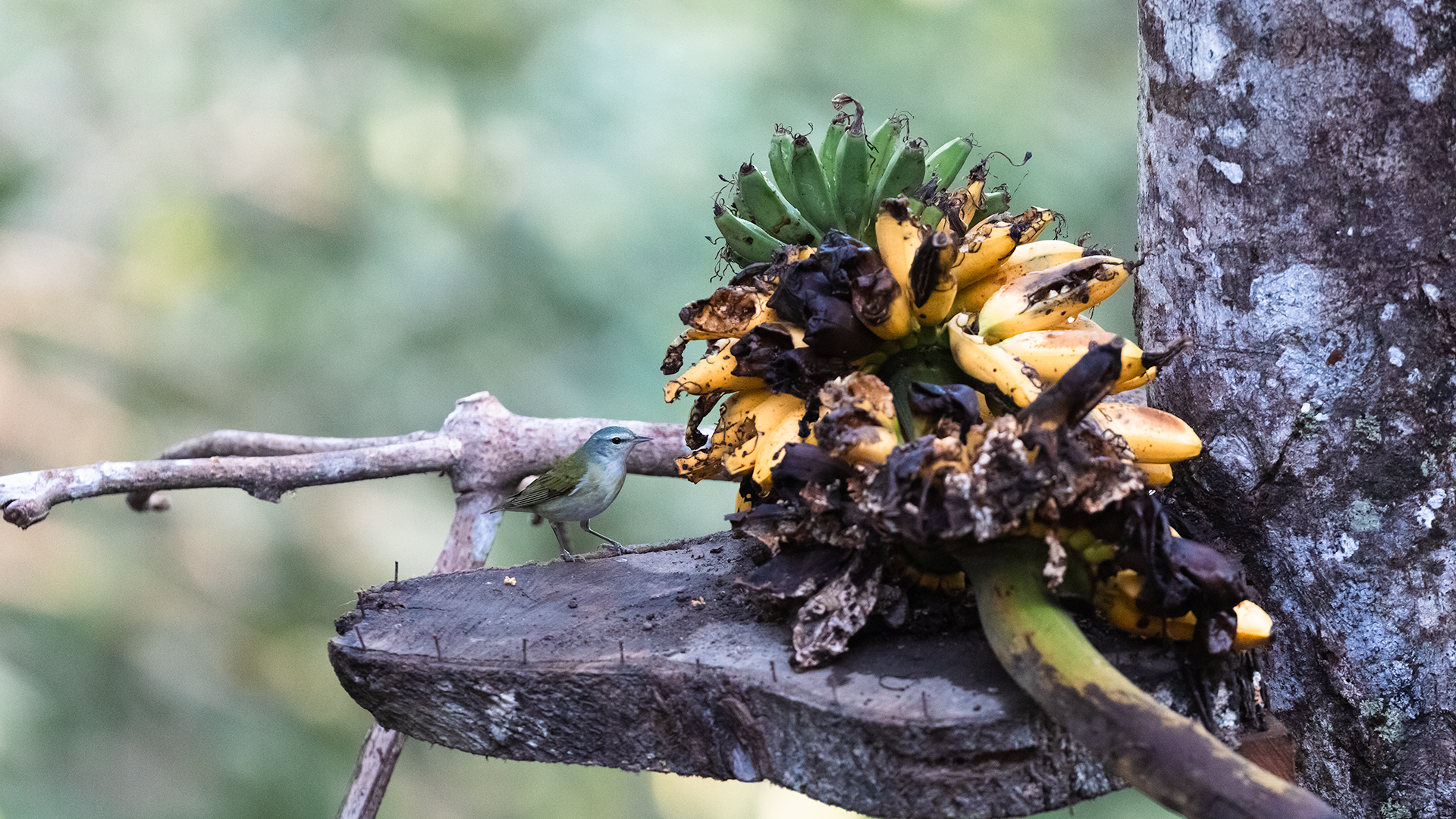
Tiny, greenish warbler that breeds in boreal forest. Breeding males have lime-green back, pale blue-gray head, and dingy whitish underparts. Females and immatures generally show more yellow overall, but still dull. Note thin dark line through the eye, paler eyebrow, and whitish undertail coverts. Most similar to Orange-crowned Warbler. Look for cleaner, unstreaked breast and white (not yellow) undertail coverts. Loud song for such a small bird; usually three-parted series of accelerating chips. Often found around flowering trees during migration. Winters in Central and South America.
COLOMBIA . Minca . 2022

Rather large, spectacular hummingbird of humid tropical lowlands that favors forest edges, adjacent clearings with scattered trees and flowering bushes, and gardens. Feeds at all levels, often in the canopy, hovering with its tail cocked and occasionally opening it to show extensive white. Male has deep blue hood, green upperparts with white collar (often hard to see), white underparts, and mostly white tail. Some females look similar to males while others look very different, with dark spotting below and a mostly green tail with white tips.
COLOMBIA . Minca . 2022
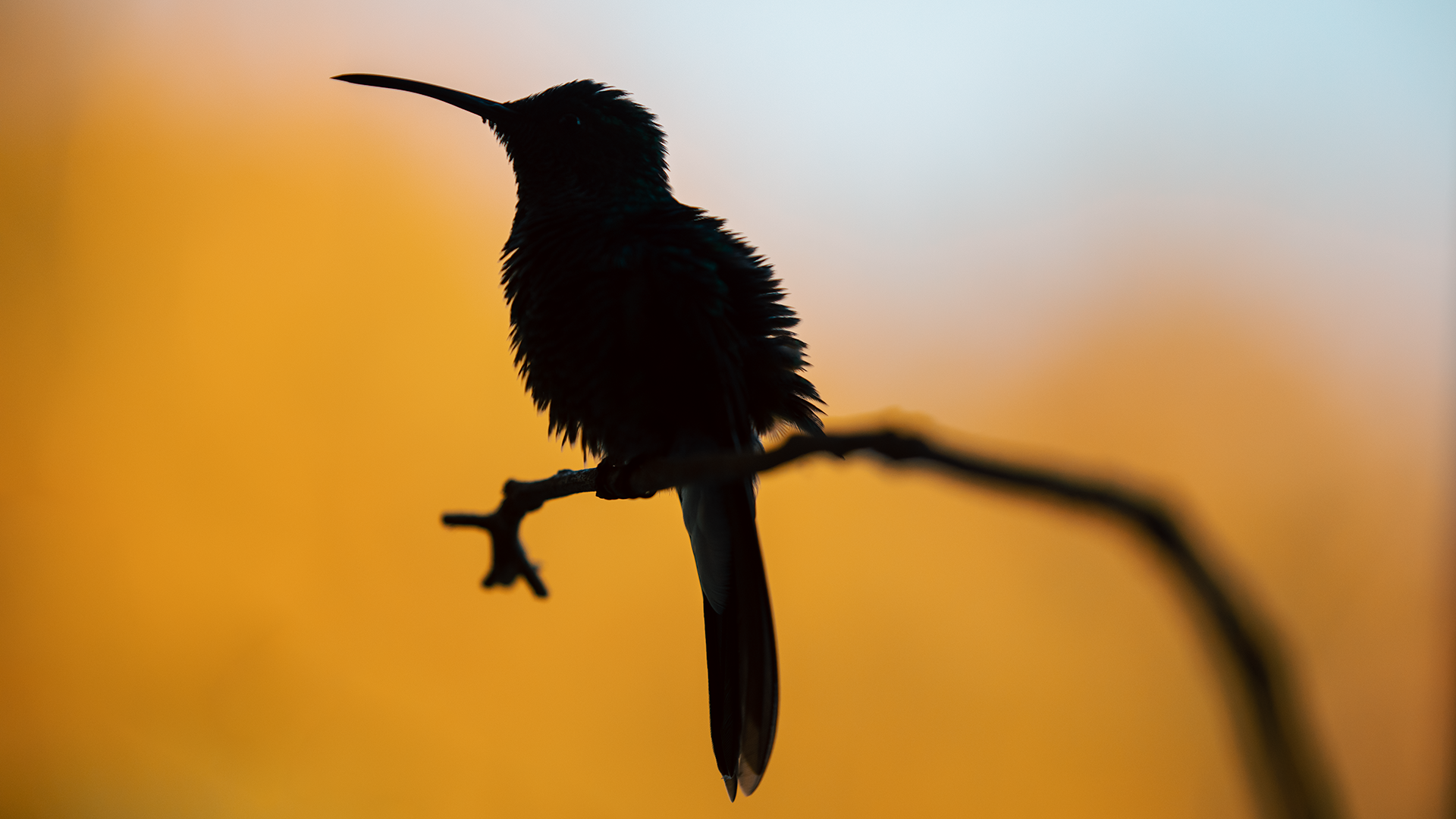
Medium-sized hummingbird, male mostly green with turquoise tones. Female green above and gray below. On both sexes, note contrasting white undertail coverts to distinguish from other hummingbirds. Most similar to Bronze-tailed Plumeleteer, but tail dark blue-black, not bronzy. Usually seen singly at flowers in forest, edges, or shrubby second growth. Rarely visits feeders.
COLOMBIA . Minca . 2022

Large unmistakable toucan with a huge, rainbow-colored bill. Often seen in pairs, but not usually in groups like aracaris. Flies with a few flaps followed by a swooping glide, sometimes high over the forest canopy, and looks like a ‘flying banana.’ Heard more often than seen: ‘song’ is a far-carrying, frog-like croak, repeated steadily. Despite its large size and bright colors, can be difficult to see in leafy canopy, where it moves deliberately in search of food.
COLOMBIA . Minca . 2022
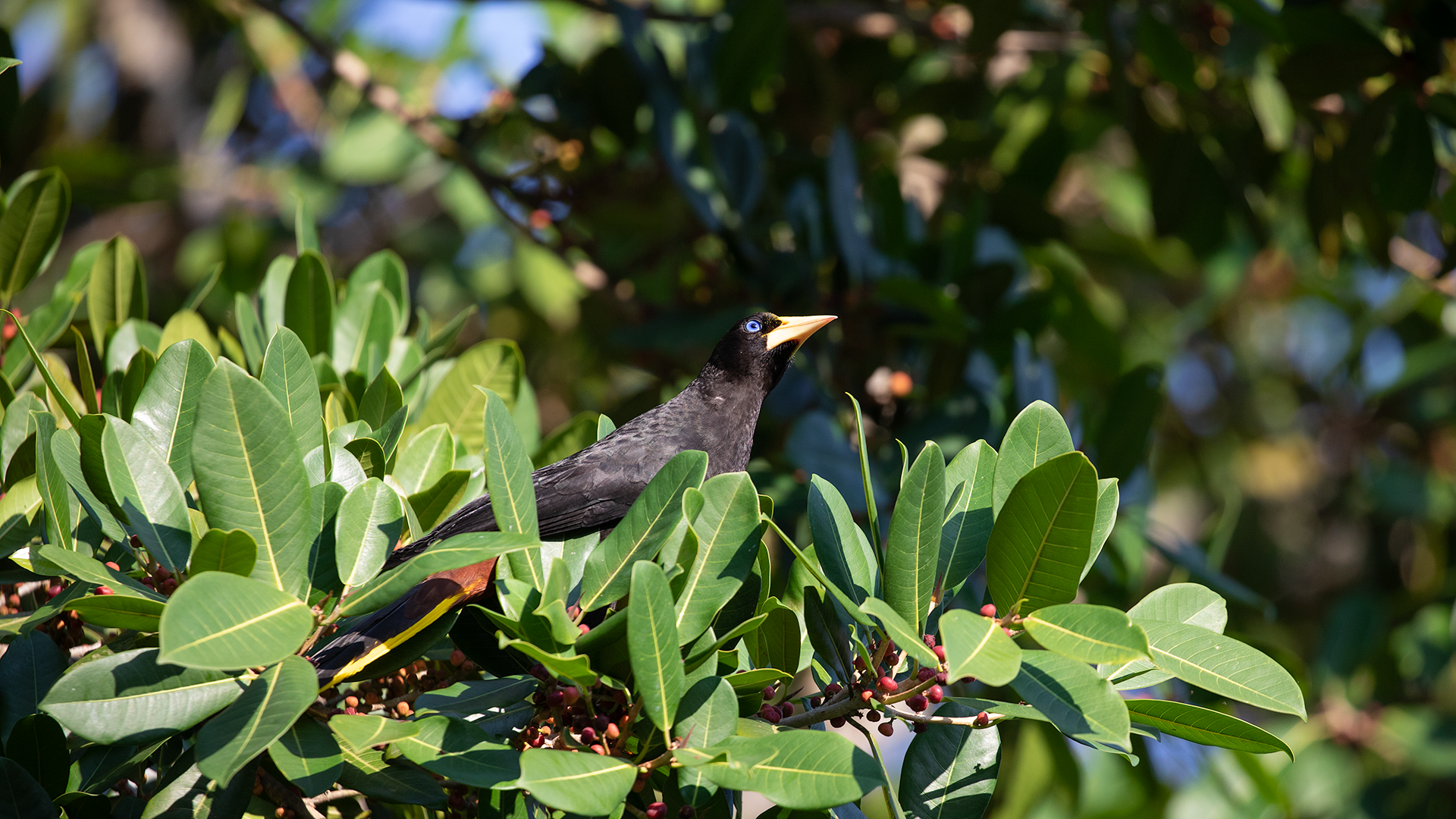
Large blackbird with thick triangular bill. Dark blackish plumage, fading to paler reddish-brown at rear. At a distance, appears all black. Striking yellow tail and pale blue eye. Separated from other oropendolas by combination of large size and dark color. Often found in loose flocks anywhere with some trees, including forests, edges, and even disturbed open habitats. Oropendolas are colonial nesters that build hanging woven nests. Listen for bizarre gurgling noises.
COLOMBIA . Minca . 2022
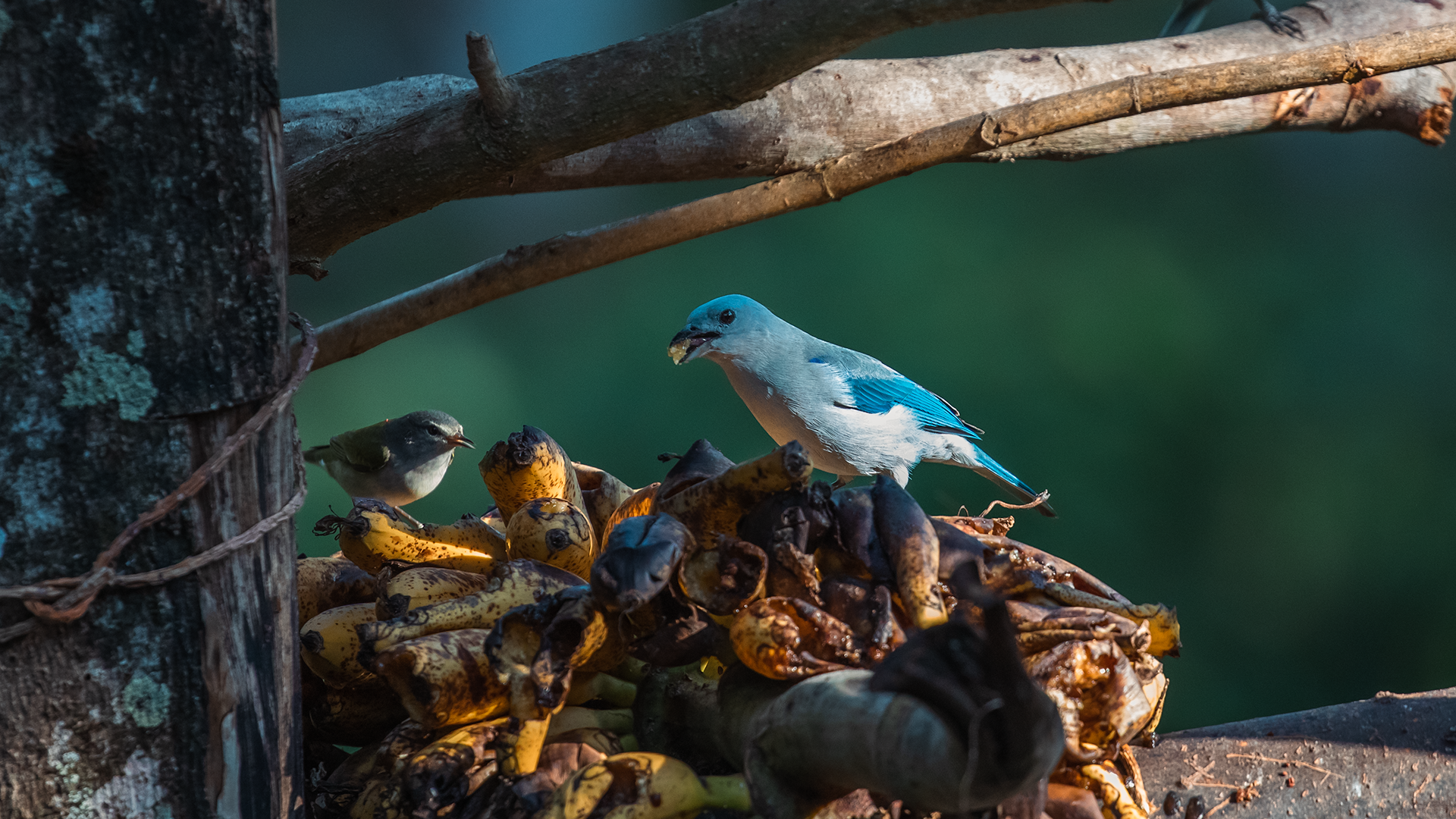
Common and widespread powder blue-gray bird of open and semi-open areas with larger trees and hedges, towns, villages, and gardens in tropical and subtropical regions. Mainly feeds at mid-upper levels in trees, eating fruit, and perches readily on phone wires. Rather plain but distinctive appearance, with beady dark eye and fairly stout bill. Populations east of the Andes in South America have broad white wing-bars and look very different.
COLOMBIA . Minca . 2022
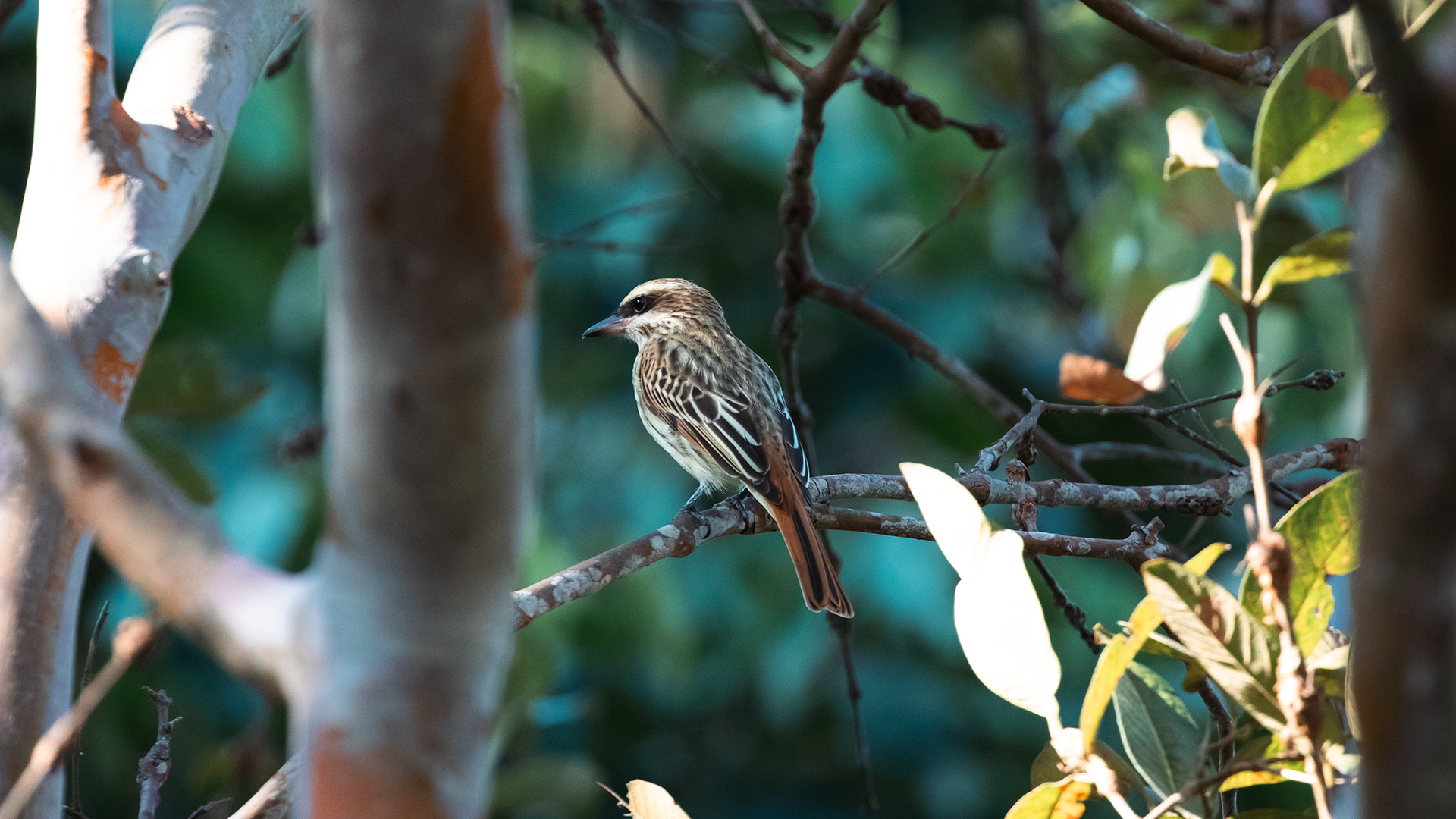
Large, streaky flycatcher, summer migrant in northern part of its range. Favors forest and edge, plantations with tall trees; lives mainly at middle to upper levels in the canopy. Told from slightly smaller and slimmer Sulphur-bellied by paler throat, lack of thick blackish moustaches, lack of strong yellow wash on belly, and bigger bill with pale pinkish base below (can be matched by juvenile Sulphur-bellied).
COLOMBIA . Minca . 2022
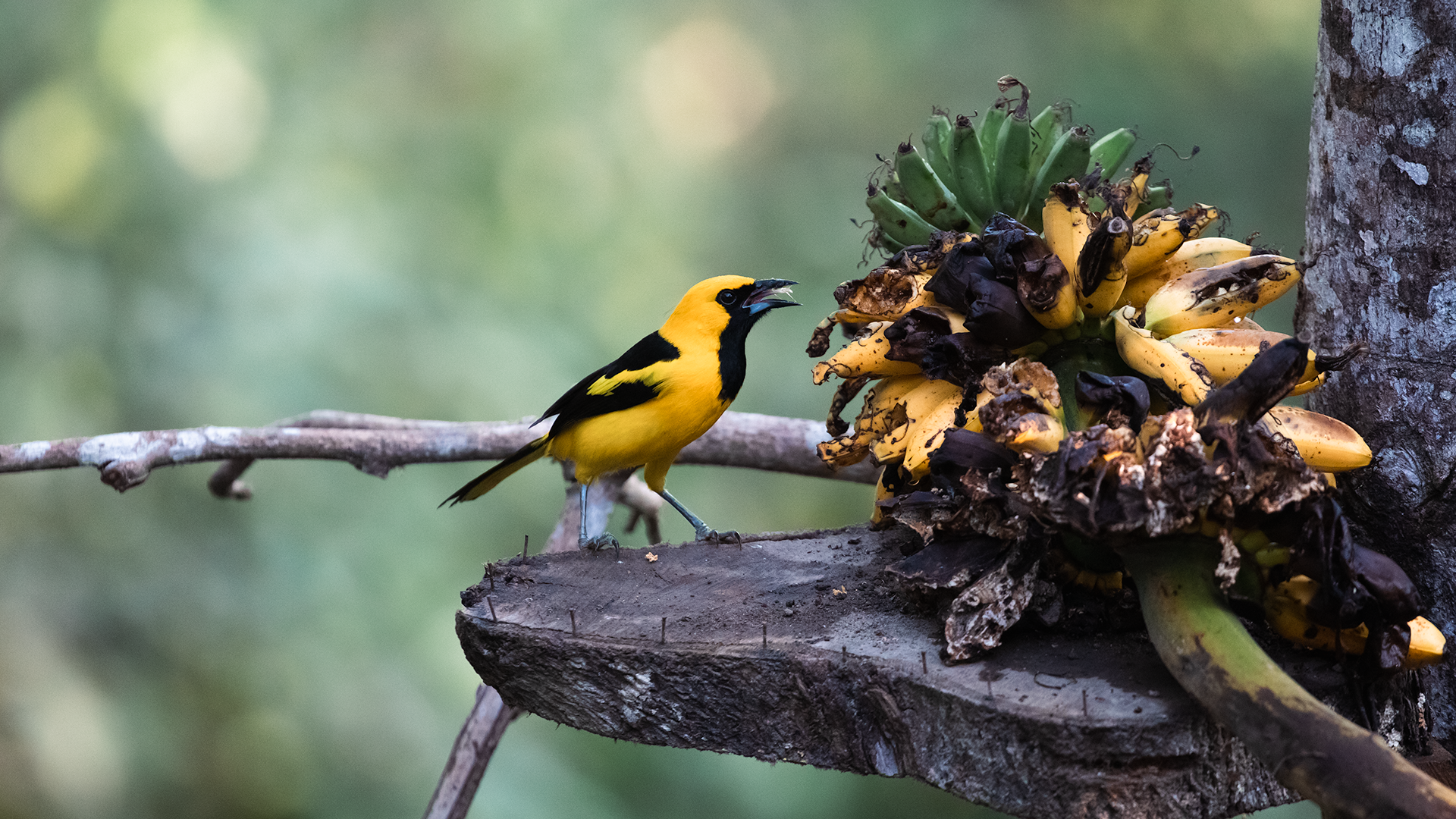
Flashy black-and-yellow oriole of humid tropical lowlands. Favors tangles and thickets along rivers and near water, also overgrown fields. Usually in pairs, often rather skulking. Both sexes have black back and wings with a big yellow shoulder bar, black tail with yellow sides that flash in flight. Immature has same pattern but duller, with a greenish back. Rich whistled song has a rollicking, rhythmic cadence.
COLOMBIA . Minca . 2022
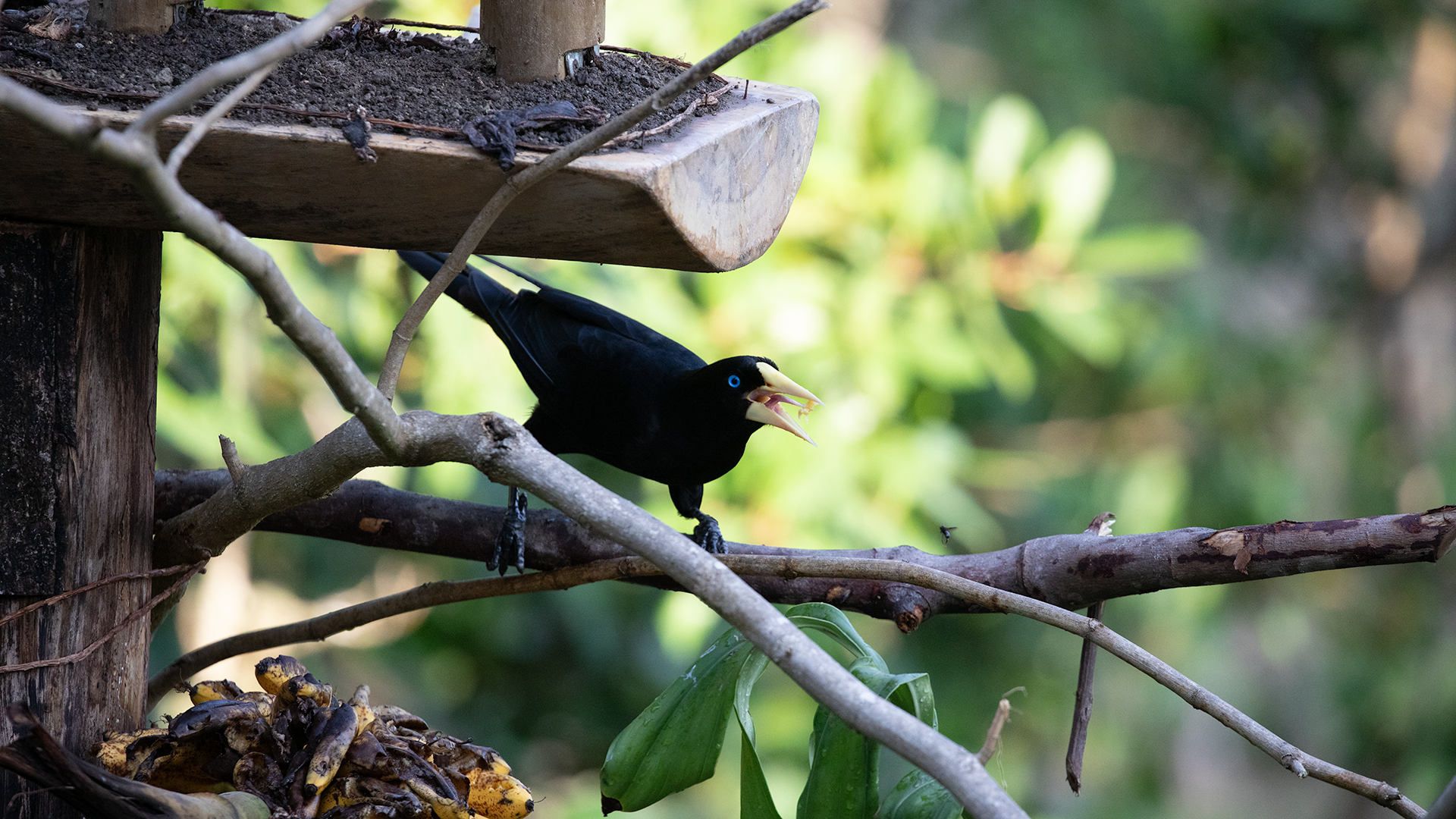
Large blackbird with thick triangular bill. Dark blackish plumage, fading to paler reddish-brown at rear. At a distance, appears all black. Striking yellow tail and pale blue eye. Separated from other oropendolas by combination of large size and dark color. Often found in loose flocks anywhere with some trees, including forests, edges, and even disturbed open habitats. Oropendolas are colonial nesters that build hanging woven nests. Listen for bizarre gurgling noises.
COLOMBIA . Minca . 2022
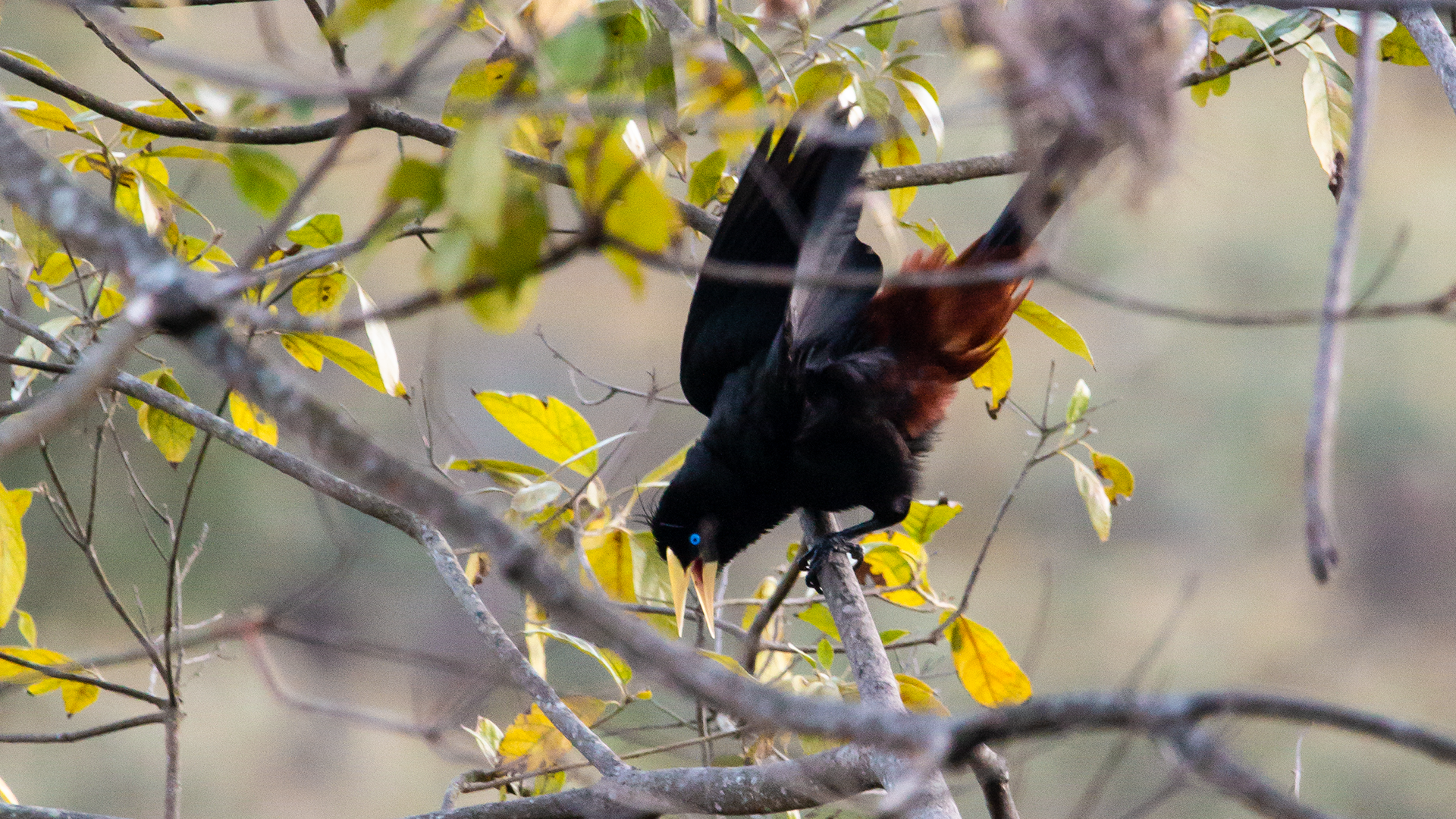
Large blackbird with thick triangular bill. Dark blackish plumage, fading to paler reddish-brown at rear. At a distance, appears all black. Striking yellow tail and pale blue eye. Separated from other oropendolas by combination of large size and dark color. Often found in loose flocks anywhere with some trees, including forests, edges, and even disturbed open habitats. Oropendolas are colonial nesters that build hanging woven nests. Listen for bizarre gurgling noises.
COLOMBIA . Minca . 2022
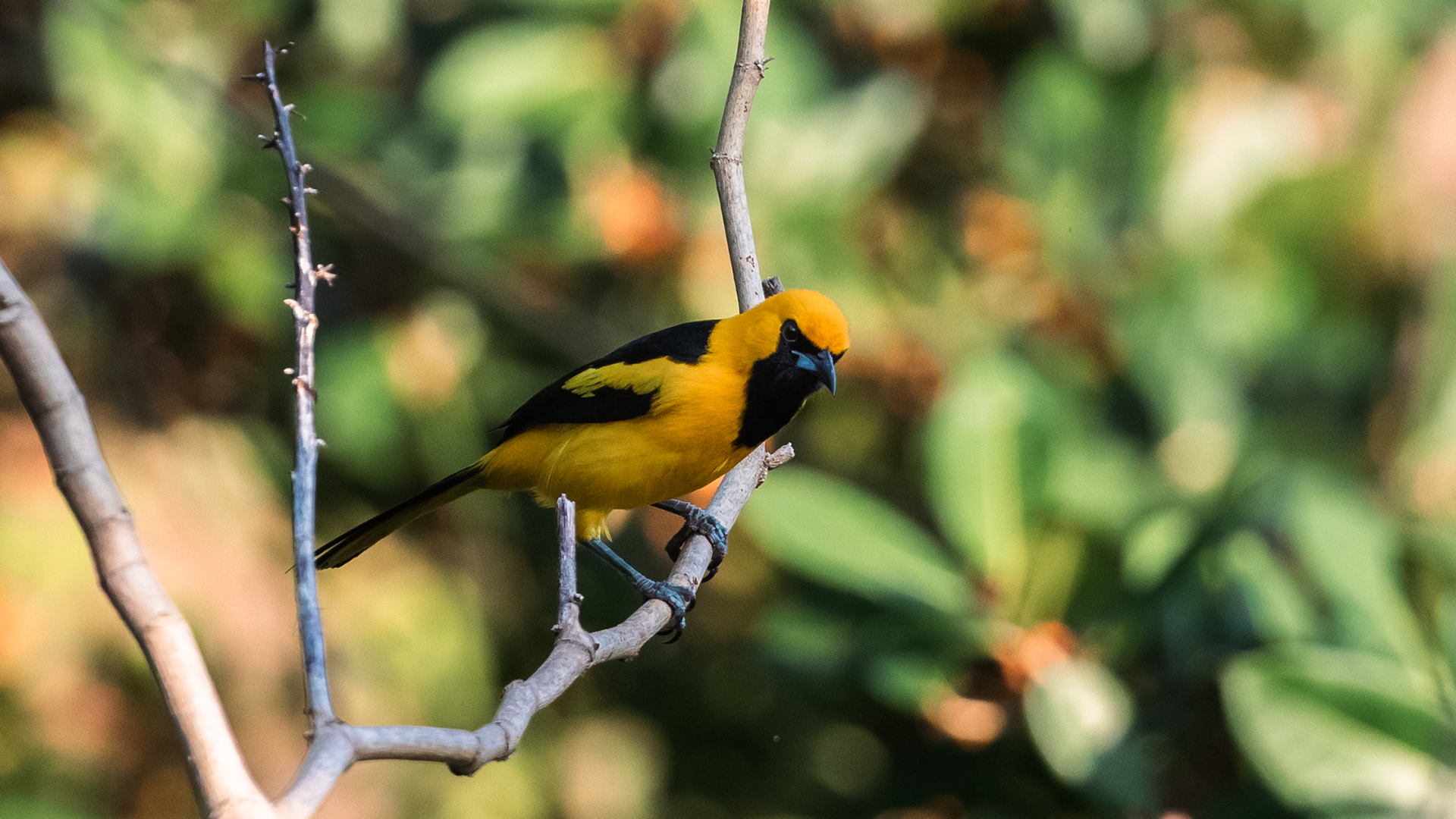
Flashy black-and-yellow oriole of humid tropical lowlands. Favors tangles and thickets along rivers and near water, also overgrown fields. Usually in pairs, often rather skulking. Both sexes have black back and wings with a big yellow shoulder bar, black tail with yellow sides that flash in flight. Immature has same pattern but duller, with a greenish back. Rich whistled song has a rollicking, rhythmic cadence.
COLOMBIA . Minca . 2022

Tiny, greenish warbler that breeds in boreal forest. Breeding males have lime-green back, pale blue-gray head, and dingy whitish underparts. Females and immatures generally show more yellow overall, but still dull. Note thin dark line through the eye, paler eyebrow, and whitish undertail coverts. Most similar to Orange-crowned Warbler. Look for cleaner, unstreaked breast and white (not yellow) undertail coverts. Loud song for such a small bird; usually three-parted series of accelerating chips. Often found around flowering trees during migration. Winters in Central and South America.
COLOMBIA . Minca . 2022

Medium-sized woodpecker found from Costa Rica to northern South America. Pale buffy overall with a red nape and belly and black-and-white barring on the back. Female has a pale crown with restricted red on the back of the nape; male has red extending to top of crown. Common in open woodlands, second growth, and gardens.
COLOMBIA . Minca . 2022
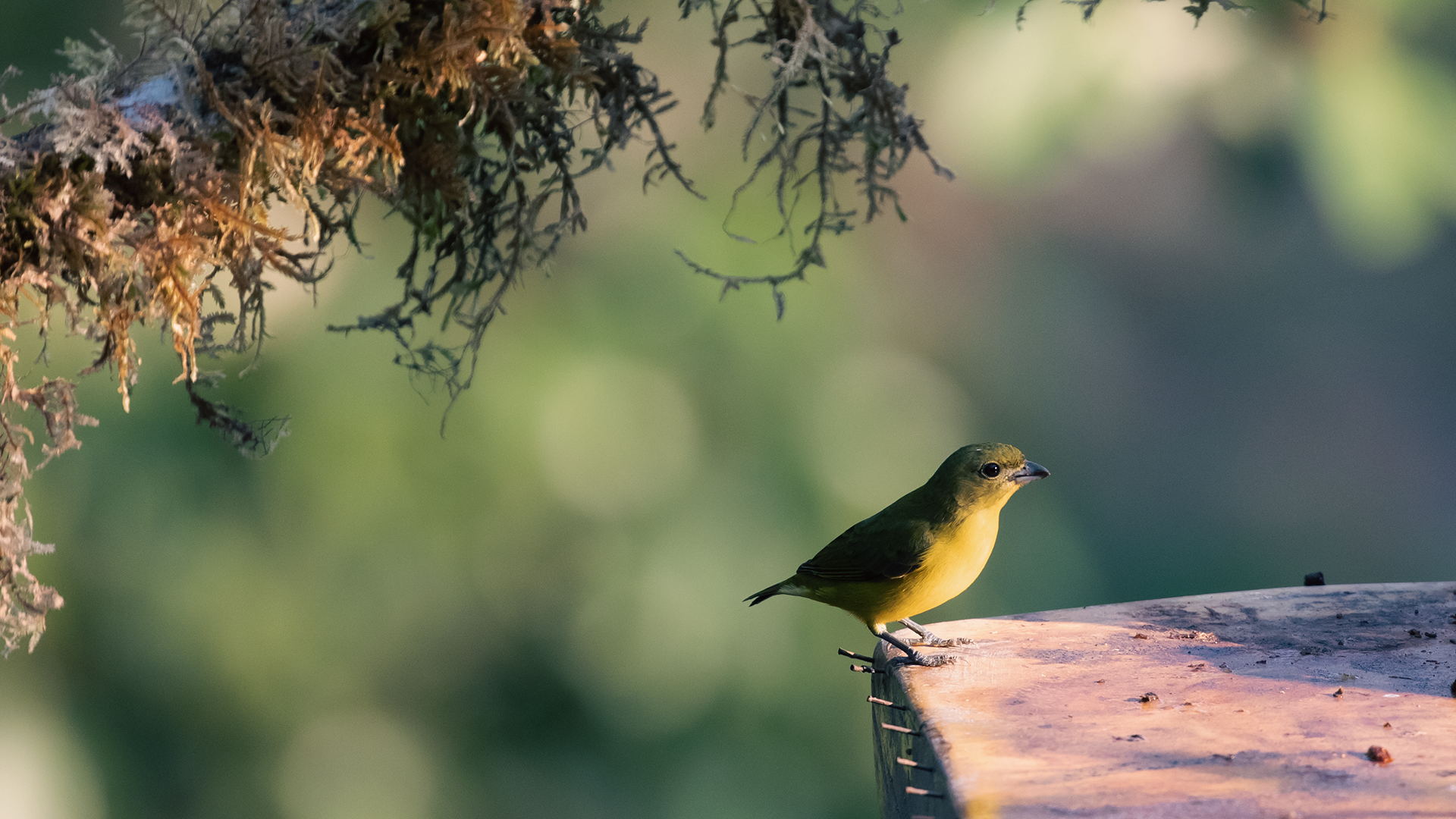
Small finchlike bird, compact and short-tailed. Generally yellow below and dark blue-black above with stout bill. To identify male euphonias, focus on crown and throat: on Thick-billed, crown is entirely yellow and throat is yellow. Females are extremely difficult to separate from other euphonias, especially Yellow-crowned, but often seen in pairs or small groups with more distinctive males. Frequents open forested habitats, edges, and gardens. Can form mixed feeding flocks with other species such as warblers and tanagers.
COLOMBIA . Minca . 2022

Tiny, greenish warbler that breeds in boreal forest. Breeding males have lime-green back, pale blue-gray head, and dingy whitish underparts. Females and immatures generally show more yellow overall, but still dull. Note thin dark line through the eye, paler eyebrow, and whitish undertail coverts. Most similar to Orange-crowned Warbler. Look for cleaner, unstreaked breast and white (not yellow) undertail coverts. Loud song for such a small bird; usually three-parted series of accelerating chips. Often found around flowering trees during migration. Winters in Central and South America.
COLOMBIA . Minca . 2022
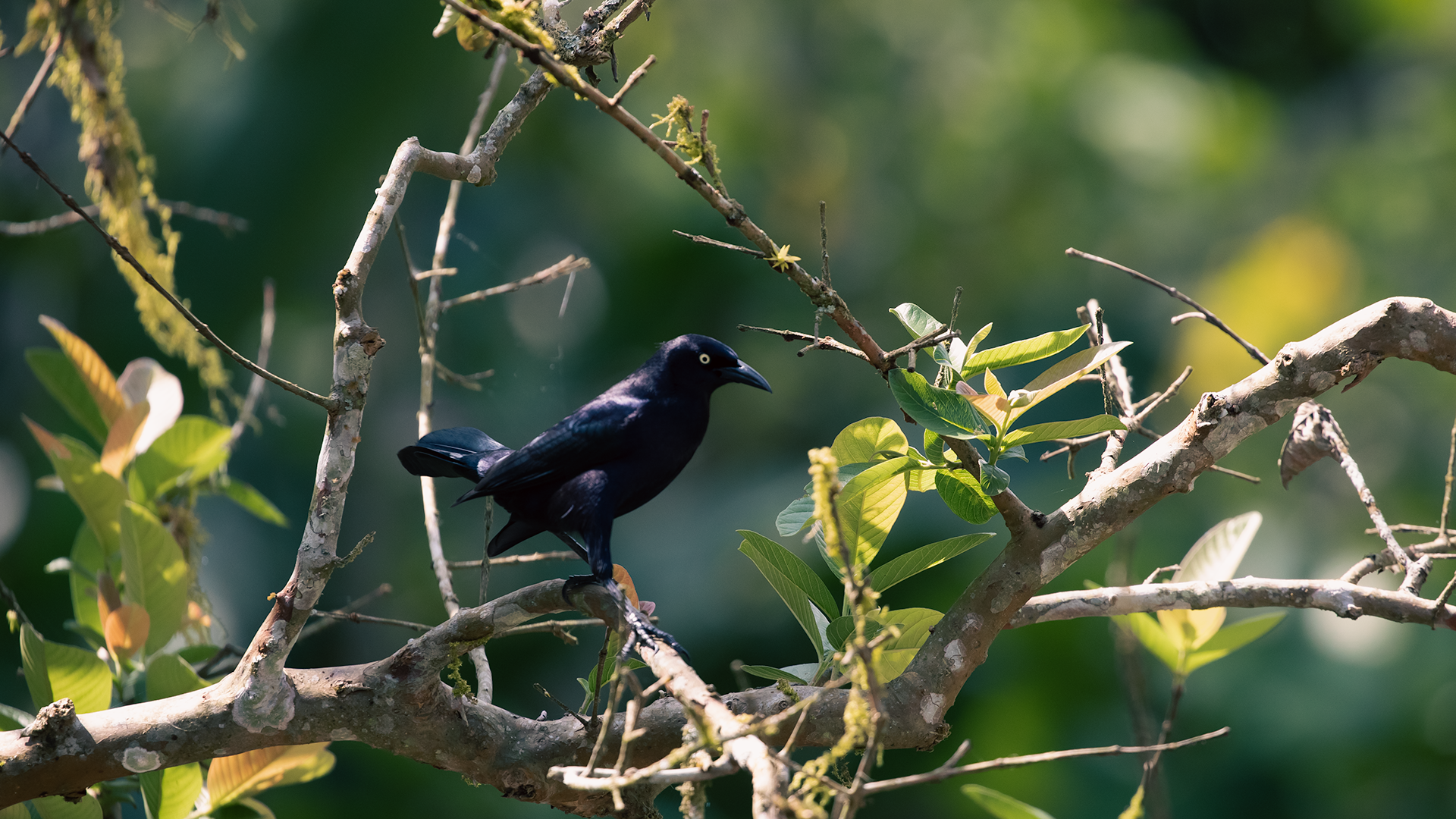
Large, lanky blackbird with flat crown and long tail. Males have ridiculously long tails, almost as long as their body, often held in a V-shape. Males are glossy black. Females are brown with paler eyebrow and throat. Eyes yellow to white; dusky for immatures. In coastal Texas, where its range overlaps with Boat-tailed Grackle, note habitat (more generalized as opposed to strictly saltmarsh) and pale eye (not brown).
COLOMBIA . Minca . 2022
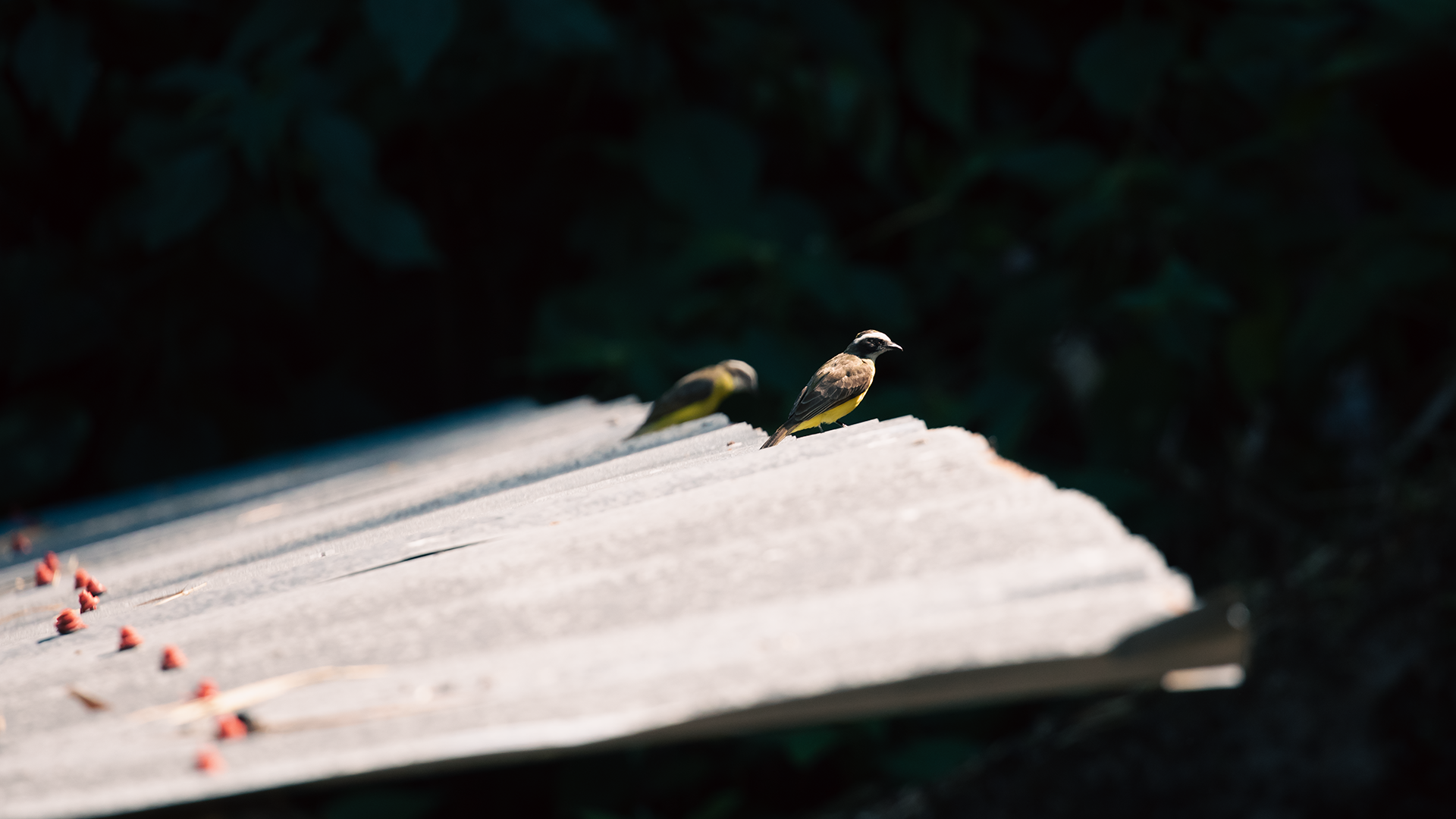
Large and often noisy flycatcher of montane cloud forest. Yellow underparts, dark face, and white head stripes are suggestive of Great Kiskadee, but note that Golden-bellied Flycatcher has a white moustache stripe rather than a white throat; it is also found mainly at higher elevations. Birds from South America and eastern Panama have olive streaks on the breast; they were formerly considered subspecies of Golden-crowned Flycatcher. Perches at middle to upper levels of the forest, where it gives loud squeak- toy-like calls.
COLOMBIA . Minca . 2022
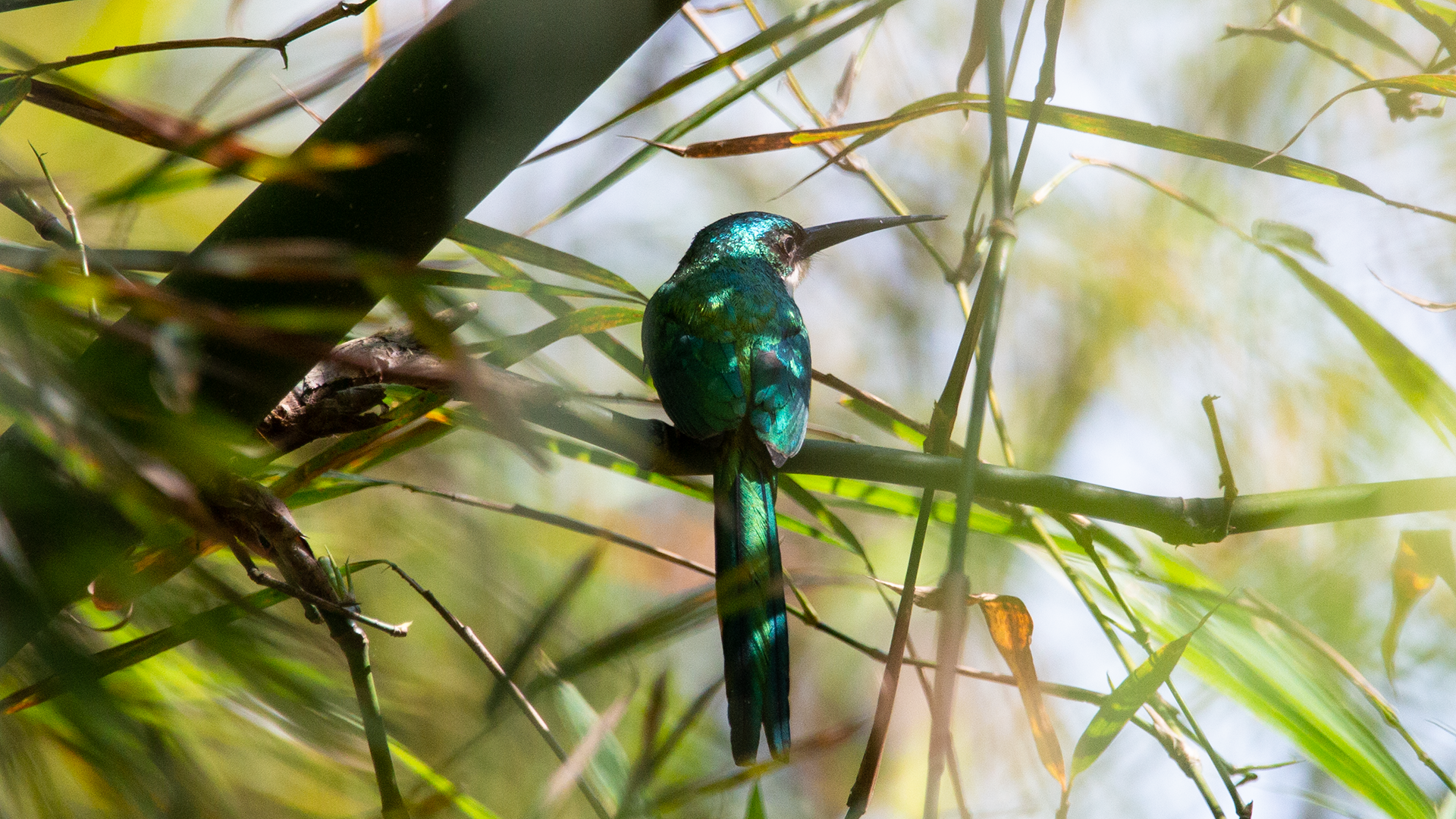
Handsome, slender, green-and-rusty bird of humid tropical lowlands. Lives in evergreen forest, often at edges and around adjacent clearings. Perches upright at mid-heights on vines or other exposed perches and sallies out for flying insects, especially butterflies, dragonflies, and wasps. Note the very long, slender black bill (like a giant hummingbird). Throat is white on male and buffy on female. Loud shrieking calls may draw attention.
COLOMBIA . Minca . 2022
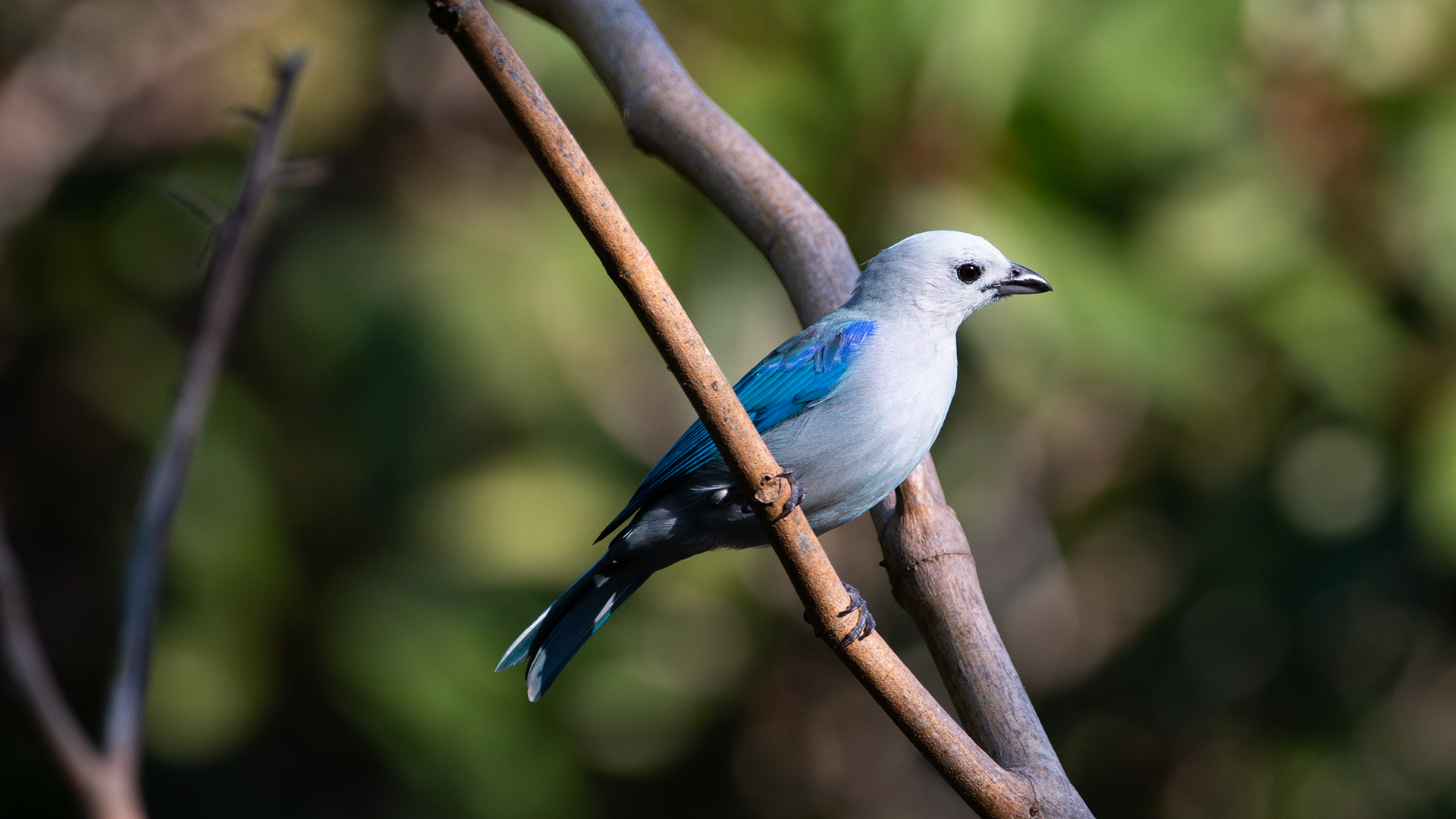
Common and widespread powder blue-gray bird of open and semi-open areas with larger trees and hedges, towns, villages, and gardens in tropical and subtropical regions. Mainly feeds at mid-upper levels in trees, eating fruit, and perches readily on phone wires. Rather plain but distinctive appearance, with beady dark eye and fairly stout bill. Populations east of the Andes in South America have broad white wing-bars and look very different.
COLOMBIA . Minca . 2022
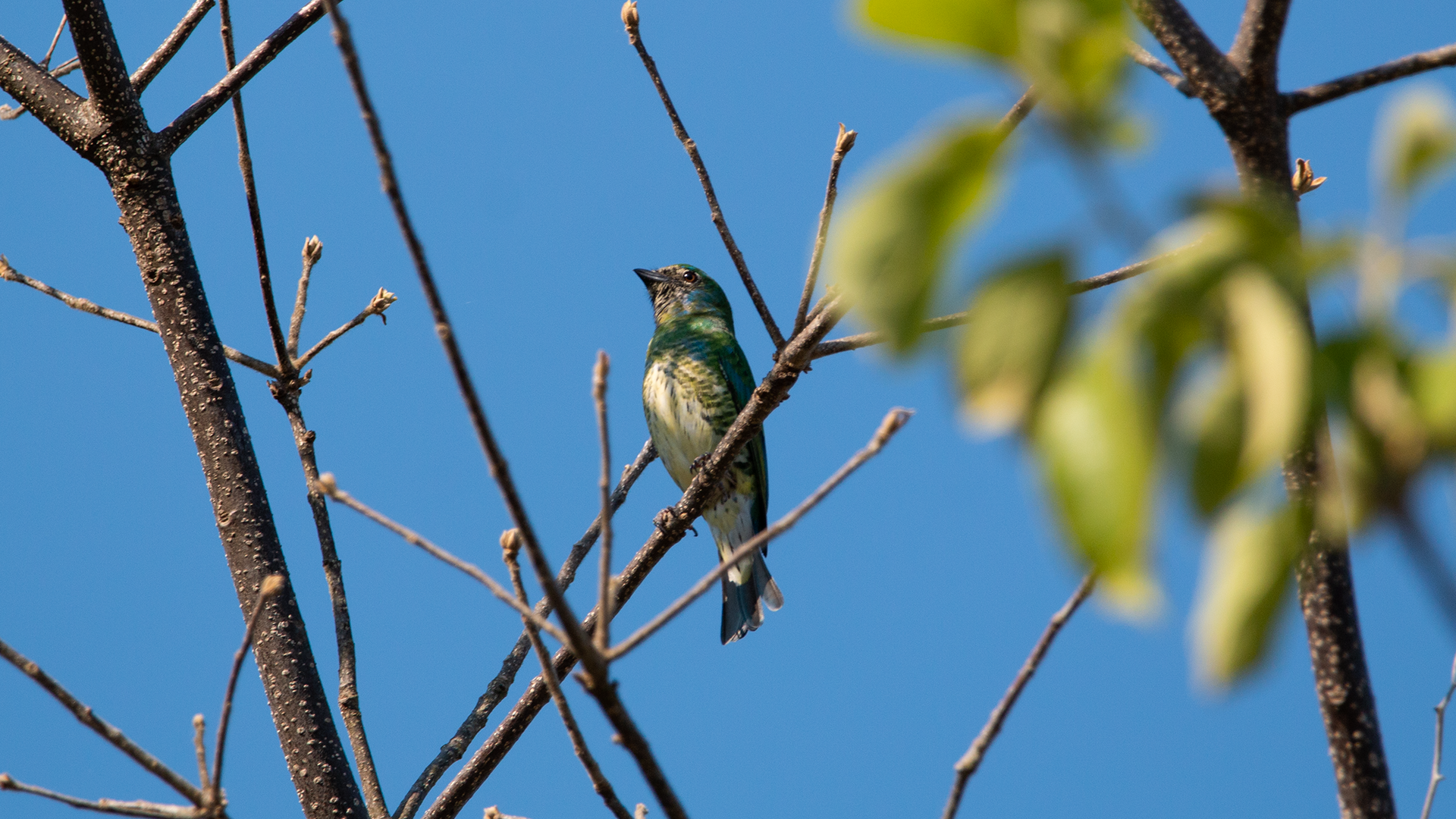
Unique small tanager, widespread in lowlands and foothills up to 1,800 m. Male is bright cerulean with a black mask, white lower belly, and some black bars on the sides. Female is mossy green with paler yellow belly and scalloped barring on the sides. Behavior much different from other tanagers: perches upright, often on exposed branches or treetops, and sallies out for insects like a flycatcher. Usually seen in pairs or small loose groups. Found at forest edges, clearings, or gardens.
COLOMBIA . Minca . 2022
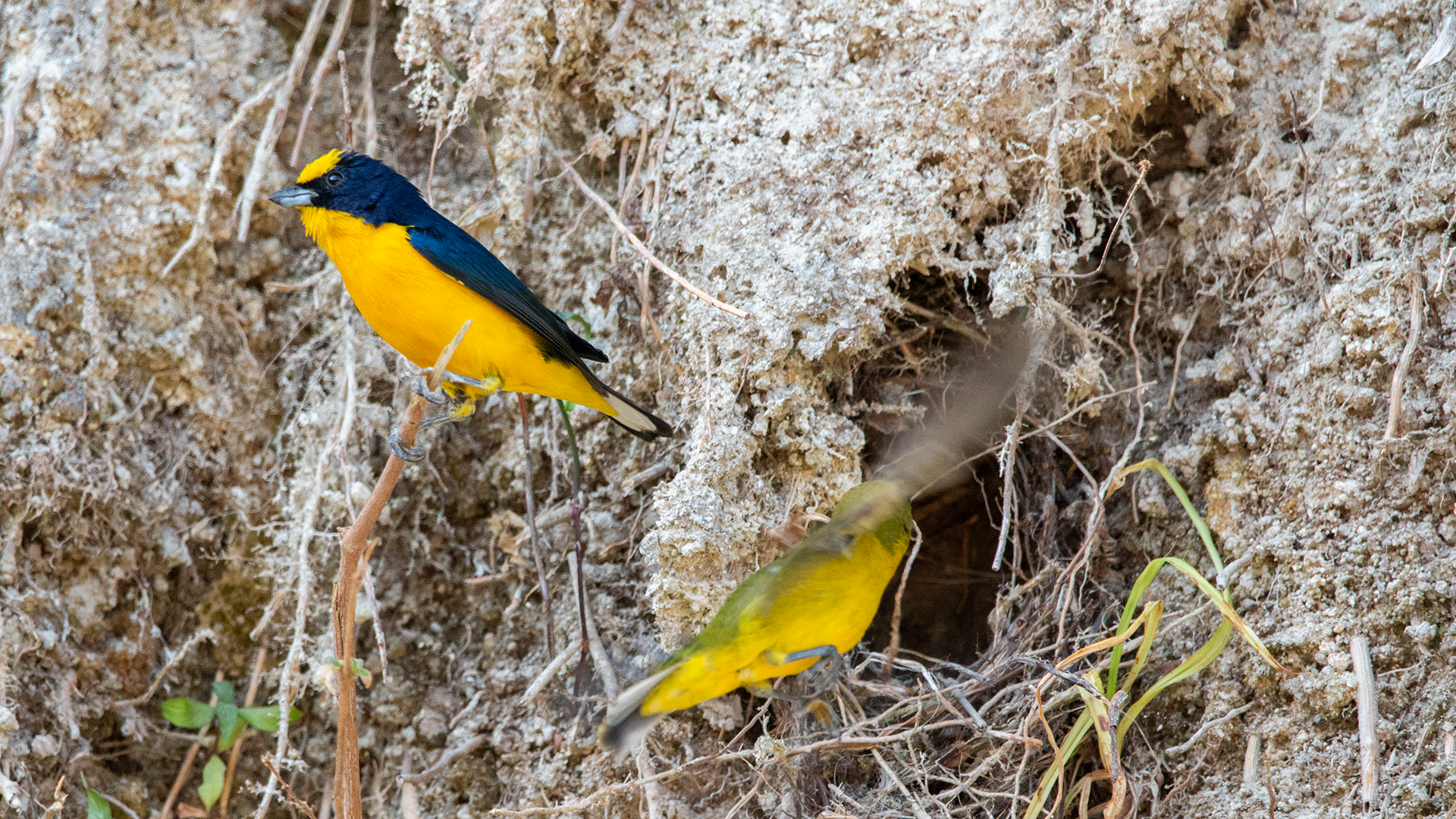
Tiny finch of tropical lowlands and foothills, mainly in humid areas. Found in forest canopy, adjacent clearings with trees, gardens. Usually in pairs, sometimes small groups that associate readily with other euphonias, especially when feeding at mistletoe. Male has rich yellow throat and underparts (lacks black throat of male Scrub Euphonia); female has pale grayish throat and yellow sides creating a vested appearance. Young male looks like female with an adult male head stuck on.
COLOMBIA . Minca . 2022
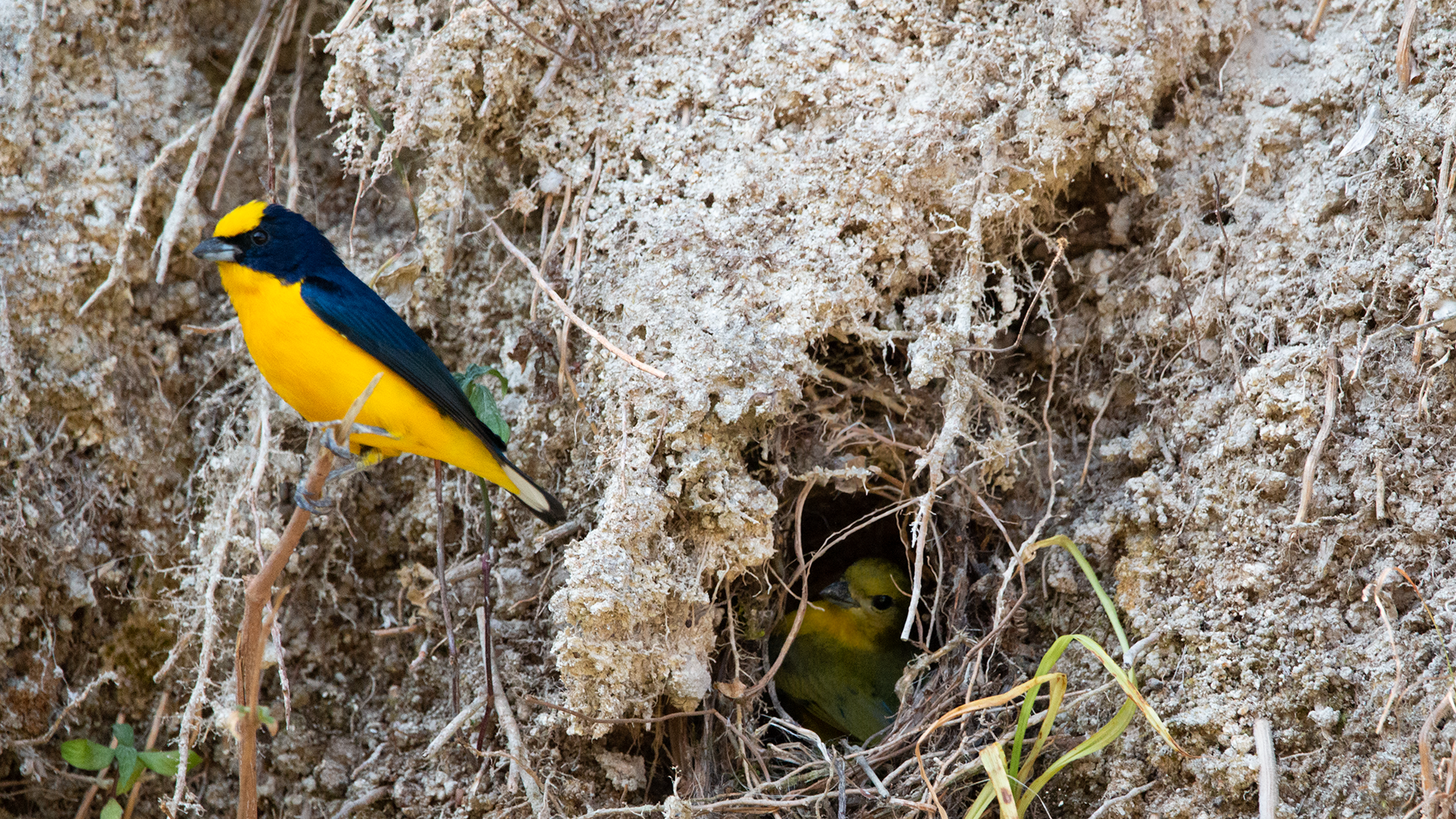
Tiny finch of tropical lowlands and foothills, mainly in humid areas. Found in forest canopy, adjacent clearings with trees, gardens. Usually in pairs, sometimes small groups that associate readily with other euphonias, especially when feeding at mistletoe. Male has rich yellow throat and underparts (lacks black throat of male Scrub Euphonia); female has pale grayish throat and yellow sides creating a vested appearance. Young male looks like female with an adult male head stuck on.
COLOMBIA . Minca . 2022
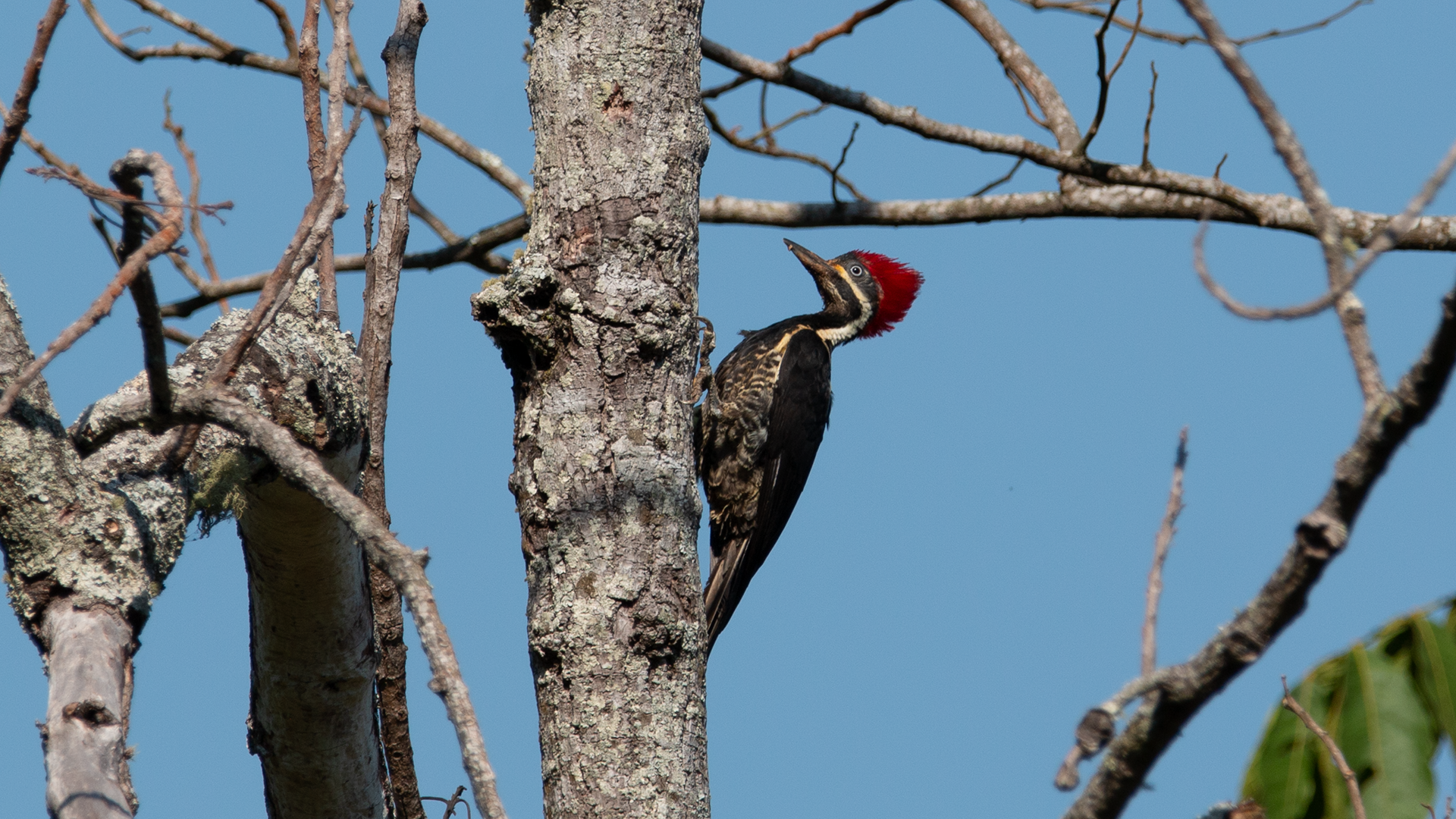
Medium-sized woodpecker found from Costa Rica to northern South America. Pale buffy overall with a red nape and belly and black-and-white barring on the back. Female has a pale crown with restricted red on the back of the nape; male has red extending to top of crown. Common in open woodlands, second growth, and gardens.
COLOMBIA . Minca . 2022
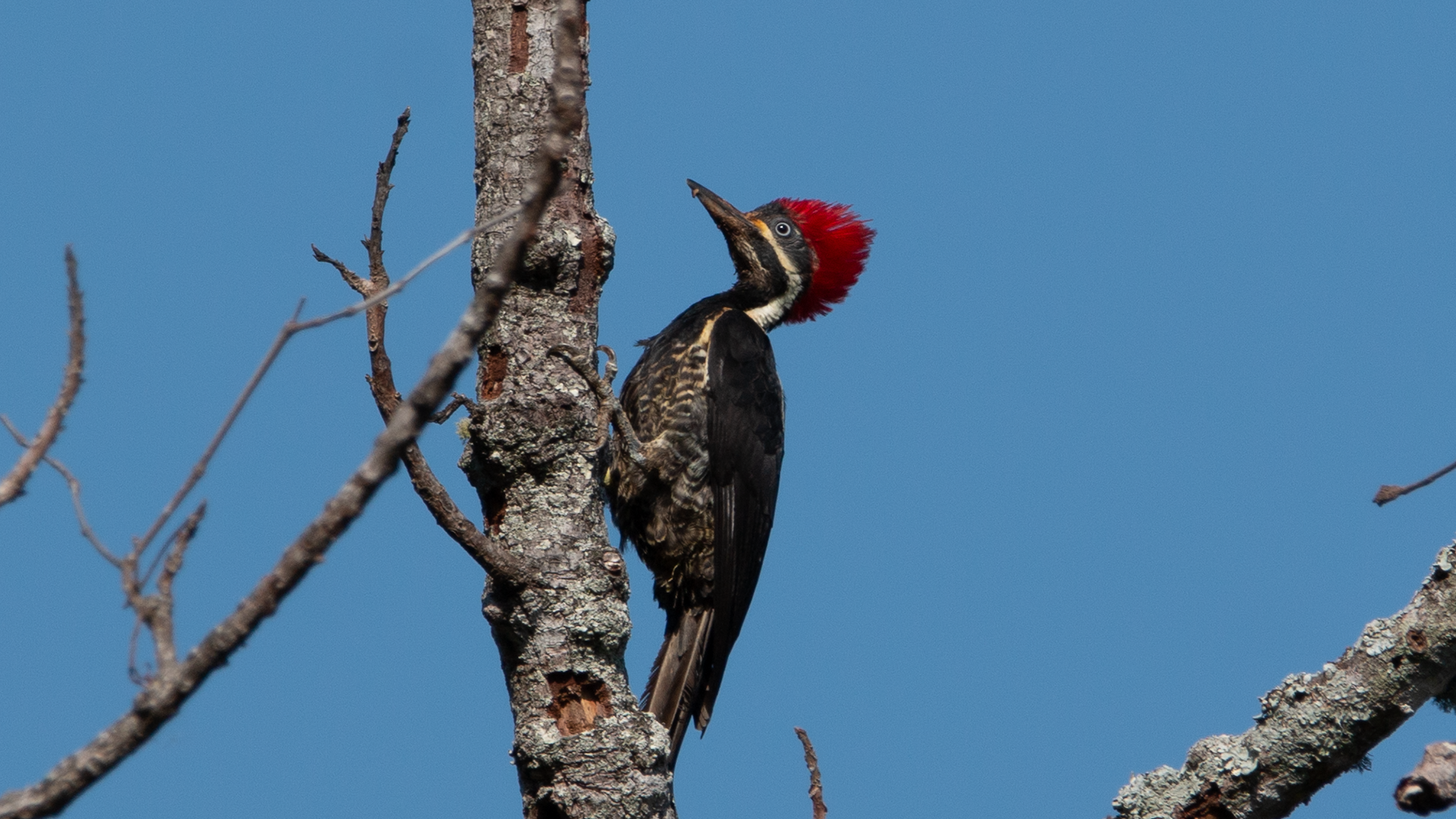
Medium-sized woodpecker found from Costa Rica to northern South America. Pale buffy overall with a red nape and belly and black-and-white barring on the back. Female has a pale crown with restricted red on the back of the nape; male has red extending to top of crown. Common in open woodlands, second growth, and gardens.
COLOMBIA . Minca . 2022
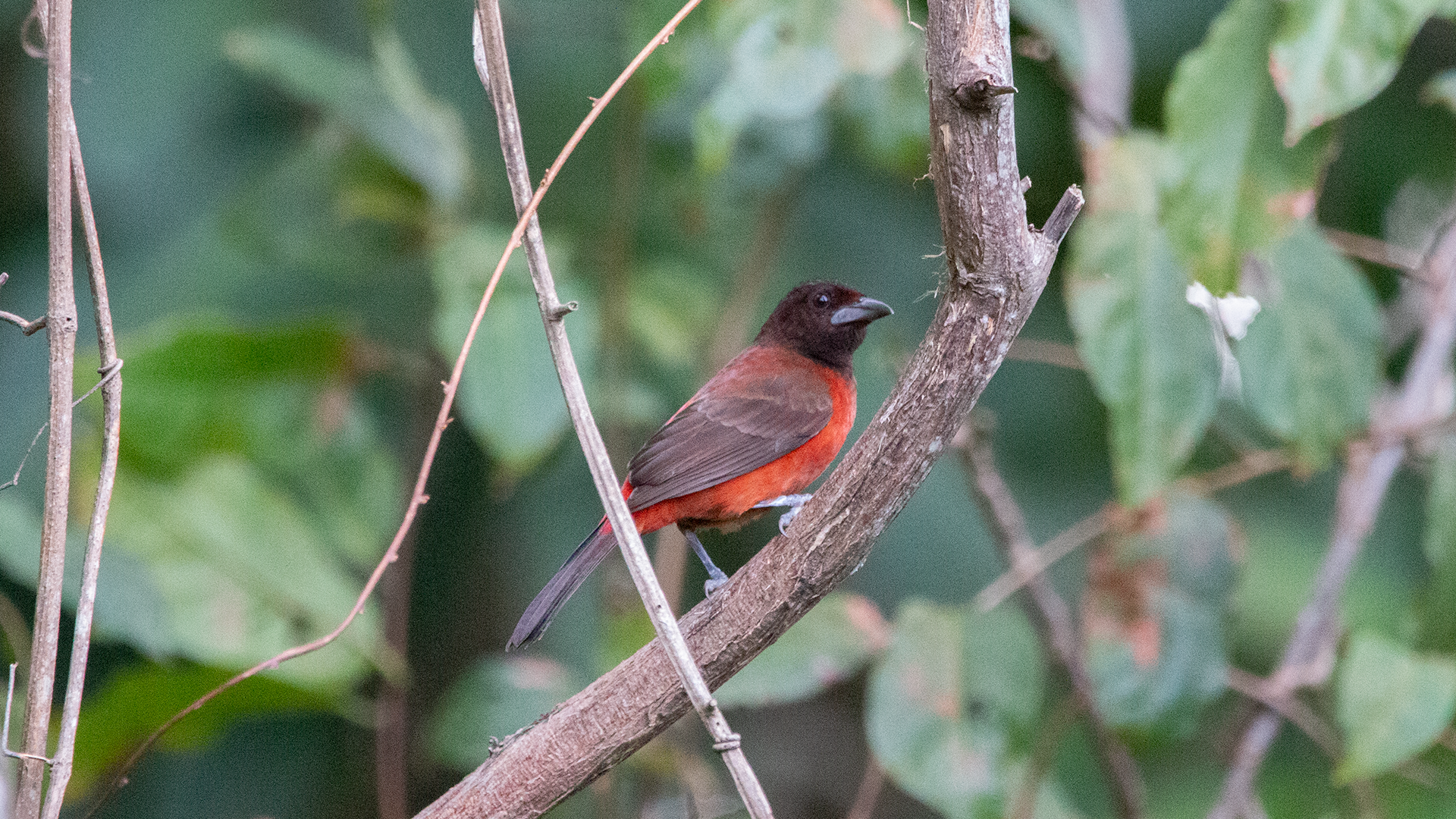
Striking red tanager with fairly limited range in lowlands and foothills below 1,300 m. Male is overall velvety red, brightest on the flanks and rump and darker on the head. Wings and tail are black. Females are duller reddish brown. Note silver bill with swollen base of lower mandible. Unlikely to be confused in range. Typically found in small flocks in shrubby open habitats and second growth.
COLOMBIA . Minca . 2022
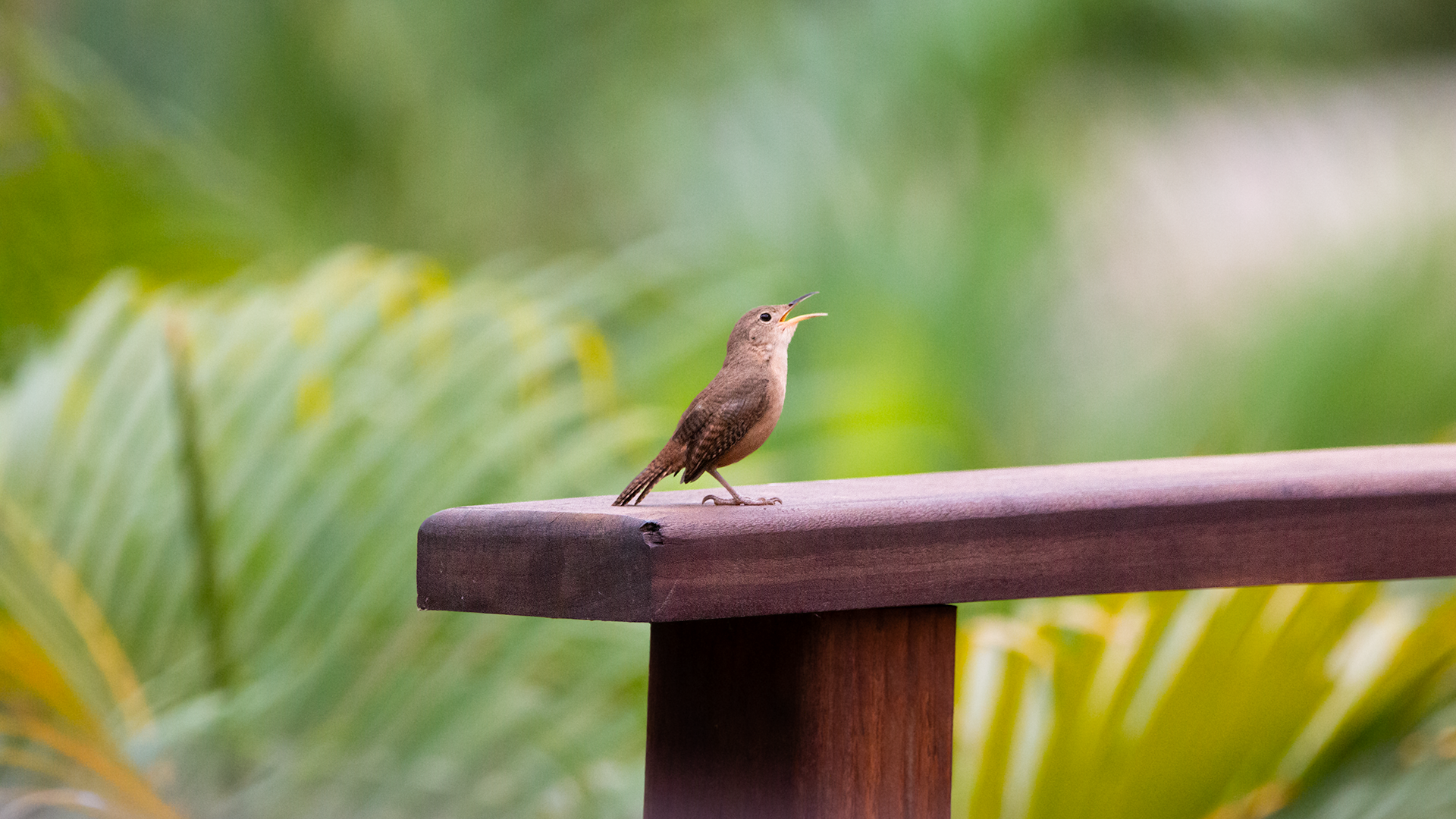
At home in suburbs, parks, rural farmland, and other open areas with thick tangles. In the breeding season, it is often singing its effervescent song from the top of a bush or fence post. Plumage doesn't show much contrast: plain brown overall, slightly paler below, with some dark barring on the wings and tail. Lacks white eyebrow. In winter they are more secretive, preferring brushy tangles, thickets, and hedgerows.
COLOMBIA . Minca . 2022
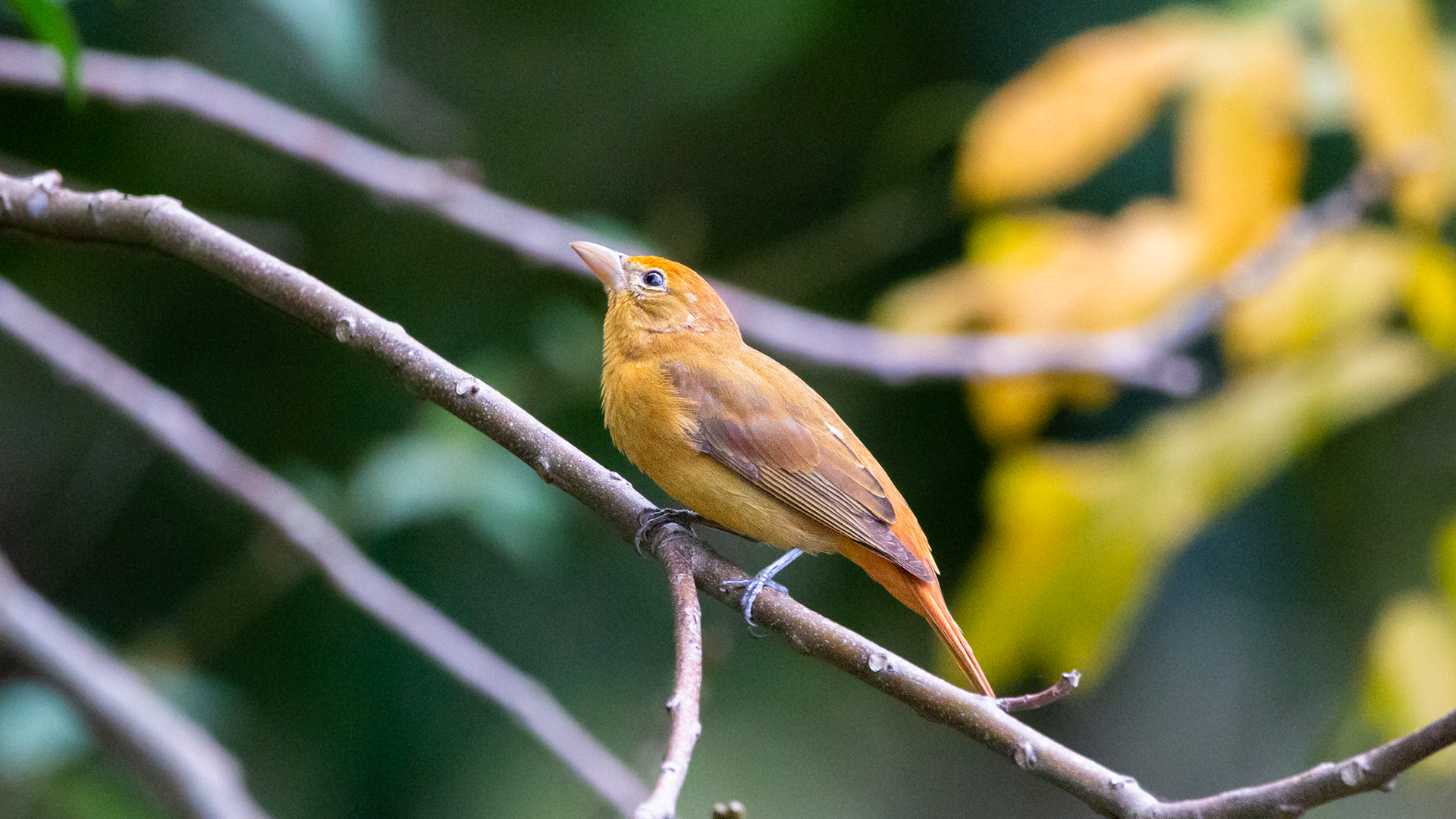
Large tanager with a hefty bill. Adult males are completely red; immature males are dull yellow-olive with blotchy patches of red. Females are variable in color, ranging from pale dull yellow to brighter orange. Can be confused with female Scarlet Tanager; Summer has a longer, paler bill and less contrast between wing and body color. Also compare with dustier-looking, stouter-billed Hepatic Tanager. Breeds in mature forests, favoring mixed deciduous and pine in the southeastern U.S. and riparian corridors in the western U.S. and northern Mexico. Extensive winter range from Mexico to Bolivia, where it can be found in any wooded area. Often gives a short, descending rattle “pit-a-tuck.”
COLOMBIA . Minca . 2022